Home » Listings » Wyoming Frontier Prison

Wyoming Frontier Prison
Rawlins | Rockies to Tetons

The eighty year history of Wyoming’s first state penitentiary, now known as the Wyoming Frontier Prison, is as colorful and elaborate as the plot of a classic western movie. The cornerstone of the prison was laid in 1888, but due to funding issues and Wyoming’s notorious weather, the doors wouldn’t open for thirteen years. In December of 1901, the prison opened and consisted of 104 cells (Cell Block A), no electricity or running water, and very inadequate heating. After serving the state for eighty years the prison closed its doors and sat abandoned until 1987 when a low budget movie titled “Prison” was filmed on location. In 1988, a joint powers board assumed ownership of the penitentiary, dubbed it The Wyoming Frontier Prison, and established it as a museum. The Wyoming Frontier Prison includes guided tours through the Prison and grounds, an exhibit on the current Wyoming State Penitentiary, and our own prison museum. The Old Pen Gift Shop is also on site along with the City of Rawlins walking path that will take you up to the old prison cemetery. From Memorial Day-Labor Day we are open seven days a week and offer eight tours a day. You will find tour fees and off season tour schedules by visiting our website.
Learn more about Rockies to Tetons
500 West Walnut Street
Rawlins, WY, 82301
(307) 324-4422
Much More to Explore
There are many ways to get out and explore all that Wyoming has to offer. Explore things to do and places to go and make your Wyoming vacation one to remember forever.
Wyoming Frontier Prison
Wyoming Frontier Prison, Rawlins, Wyoming
The eighty year history of Wyoming’s first state penitentiary, now known as the Wyoming Frontier Prison, is as colorful and elaborate as the plot of a classic western movie. The cornerstone of the prison was laid in 1888, but due to funding issues and Wyoming’s notorious weather, the doors wouldn’t open for thirteen years. In December of 1901, the prison opened and consisted of 104 cells (Cell Block A), no electricity or running water, and very inadequate heating.
After serving the state for eighty years, the prison closed its doors, and sat abandoned until 1987 when a low budget movie titled “Prison” was filmed on location. The movie was one of Viggo Mortensen’s first and featured several other well known actors. Significant damage was done to the prison grounds during filming because it had yet to be considered a historic site. In 1988, a joint powers board assumed ownership of the penitentiary, dubbed it The Wyoming Frontier Prison, and established it as a museum. The Wyoming Frontier Prison has since been listed on The National Registry of Historic Places, and offers tours to approximately 15,000 visitors annually.
The Wyoming Frontier Prison includes guided tours through the Prison, an exhibit on the current Wyoming State Penitentiary, and our own prison museum. The Old Pen Gift Shop is also on site along with the City of Rawlins walking path that will take you up to the old prison cemetery. Pets are welcome but must be leashed. For Tour times, please check out our website at www.wyomingfrontierprison.org.
500 W. Walnut St.
Rawlins, WY 82301
http://wyomingfrontierprison.org/contact/
307-324-4422
Learn more about the Wyoming Frontier Prison
Tour The Eerie Wyoming Frontier Prison To Take A Look Back In Time
Explore the Wyoming Frontier Prison Museum in Rawlins to learn about the history of crime in the Wild West and hear tales of legendary outlaws.
Written by
Wyoming's history is littered with tales of the wild, lawless west. Thanks in part to the remote nature of the state, thousands of outlaws made this their home, and thousands of lawmen came out west to track their targets. While many outlaws lived life on the run and escaped in the end, hundreds of others were not so fortunate. To hear their tales, visit the Wyoming Frontier Prison Museum, right in the middle of Rawlins.
One of the most interesting buildings you'll see in Rawlins is the looming, castle-like Wyoming Frontier Prison Museum.

The museum offers guided tours of three different cell blocks!
The Prison was known as the Wyoming State Penitentiary, and it was occupied by bandits, bank robbers, horse thieves and other criminals for 80 years - from 1901 through 1981.

On your tour, you'll get to see three cell blocks, the inmate's cafeteria and mess hall, the yard and grounds, and the infamous Death House.

Take a look at the guard towers when you step into the yard! These walls were designed to be too slick and straight for anyone to climb, and too thick to hammer through.

Here's an example of one of the "nicer" cells in the prison. A bed, a sink, and a toilet is all that was provided.

When you tour the Wyoming Fronteir Prison Museum, you'll learn all about the history of crime in the Wild West, hear about legendary outlaws who spent time here, and maybe even hear a ghost tale or two...

...so are you ready to go to prison? For more information about tours, hours, and operating seasons, visit their website right here .
By the way, the Prison is rumored to be haunted, and it's no wonder! To learn a little more about the horrors that unfolded behind these walls, read about how This Prison In Wyoming Has A Dark And Evil History That Will Never Be Forgotten .
Subscribe to our newsletter
Get the latest updates and news.
- Northern California
- Southern California
- Connecticut
- Massachusetts
- Mississippi
- New Hampshire
- North Carolina
- North Dakota
- Pennsylvania
- Rhode Island
- South Carolina
- South Dakota
- West Virginia
Thank you for subscribing!
A Terrifying, Deadly Storm Struck Wyoming In 1949 And No One Saw It Coming
The deadly blizzard of 1949 in Wyoming was a historic weather event that caused significant loss of life and severe disruptions.
If you've spent any time here in the Cowboy State when winter rolls around , chances are high that you've experienced one or two blizzards in Wyoming. It's also likely that you've lived through a few doozies, but no winter storm in Wyoming's recent memory was quite as bad as the deadly storm of 1949. Many of us weren't alive to remember that horrible winter, but we've all heard stories from our parents and grandparents who were there to witness it. This historic snowstorm in eastern Wyoming was terrifying, deadly, and all-around one for the record books.
On the evening of January 2, 1949, a massive blizzard hit Wyoming, Nebraska and the Dakotas with little warning.

This early January storm wasn't predicted to be as bad as it turned out to be, and many people were caught off guard. Unfortunately, the initial storm was just one of many that would pummel the state over the next few months.

The January 2nd storm storm lasted three days and killed nine people in Wyoming. It was a record-setting storm in terms of cold temperatures and snowfall amounts, and the brutal winds made for incredible snow drifts.

The last three casualties discovered after the first storm were Mr. and Mrs. Archuleta and their five-year-old daughter, who were found about 3.5 miles from their home in Hillsdale, frozen to death in their car. Most of the others who died froze to death as well; one man had a heart attack.
Entire towns were snowed in, and all transportation was cut off. 3,300 miles of roads were covered in snow; many people who weren't able to reach their homes in time were trapped in their cars.

Because the roads were impassable, towns began to run out of groceries. Ranches were cut off from travel. The U.S. Army sent bulldozers to clear the roads, but as soon as they cleared them, another storm rolled in and covered the roads with fresh snow.

Thousands of cattle froze or starved to death. The U.S. Air Force dropped bales of hay to starving cattle; in some cases at drop-off points, and trucks dispersed the hay to nearby fields.

For the 45 days following the initial blizzard, new storms just kept coming. The temperature never climbed above zero during that time, and snowdrifts reached 20 to 30 feet tall. Winds raged at 30 to 80 mph. Entire homes were buried to their roofs; towns completely shut down for weeks.
The storms finally eased off in March, but it would be July until many of the largest snowbanks completely melted. In all, nearly 80 people died across Wyoming, Nebraska and the Dakotas.

Farmers were hit particularly hard by the livestock casualties, and it would be a few years before the ranchers were able to resume normal operations.
What stories do you have to share about the blizzard of 1949? Wyoming PBS even did a special about this historic blizzard in Wyoming: "Storm of the Century: The Blizzard of '49."
While our state is known for its winter wind chill in particular, snowstorms in Wyoming are pretty common. Luckily, most times when a blizzard in Wyoming shuts the state down, people are able to remain safe at home. When we have enough warning, it's easier to appreciate how the snow just makes everything look magical .
Check out even more historical places and unique Wyoming tidbits , then take some time to snuggle up in a cozy cabin that has immaculate views in winter and year-round!
This Is The Single Craziest Thing You Never Knew Happened In Wyoming
Wyoming's first governor, Dr. John Eugene Osborne, made shoes from outlaw Big Nose George Parrott's skin after a public lynching.
Wyoming has quite a wild past, and there are always fascinating stories of outlaws, rangers, and early frontiersmen to be told. By far, though, the strangest story in Wyoming history involves Wyoming's first governor, outlaws, doctors, and an angry lynch mob. Read on as we share with you the tale of Big Nose George Parrott, one of the strangest stories you might ever hear!
The story began in 1878, when Big Nose George Parrott and his gang murdered two officers in Rattlesnake Canyon, near Elk Mountain.

Parrott was a well-known outlaw, but the murder of two officers put a bounty on his head. After a robbery in Montana, he was identified and located by western authorities.
Parrott was eventually captured in Montana and brought down to Rawlins to stand trial.

In Rawlins, he tried to escape the jail and was caught trying to strangle the jailer. When the town found out, they stormed the courthouse, took Parrott from his cell, and hanged him in a public lynching.
The area's most respected doctor, John Eugene Osborne, was in the audience. After seeing Parrott hang to his death, he took possession of the body.

He claimed he would use the body for medical experiments, and nobody really cared enough to question him.
It was only after Osborne made a pair of shoes out of Big Nose George's skin that people began to think twice about the Doctor's intentions.

It didn't really matter much to the people of Wyoming, though, who later elected Dr. Osborne to be Wyoming's first ever democratic Governor. Osborne wore the skin-shoes to his inauguration.
Lillian Heath was Dr. Osborne's medical assistant at the time, and he gifted her the top of Parrott's dismantled skull.

Heath kept the skull, which she used as an ashtray, door stop, and paperweight for some time. Heath later became Wyoming's first ever female doctor.
Today, you can find evidence of this strange Wyoming crime story at the Carbon County Museum, in Rawlins.

The museum has a display complete with the skull and shoes and tells some strange tales from other parts of Dr. Osborne's life prior to becoming governor.
Check out the display about Big Nose George at the Carbon County Museum. You can visit the Carbon County Museum website for hours and information, as well as the Carbon County Museum Facebook page.
Have you ever seen this display? If so, what was your favorite part? Would you agree that this story is among the weird things that happened in Wyoming? We'd love to read about your experience in the comments section below!
How crazy is the story of Big Nose George Parrott, John Eugene Osborne, and Lillian Heath? It's truly just one of the craziest stories in Wyoming history, read here for a few more:
https://www.onlyinyourstate.com/wyoming/wyoming-history-wy/
Thinking about taking a vacation soon? Then consider booking your flight via the Dollar Flight Club .
All Stories
10 things that belong on everyone’s mississippi summer bucket list.

This Blink-And-You’ll-Miss-It Town In Washington Is So Worth Exploring
Visiting the prettiest small towns near Seattle? According to Food & Wine Magazine, Bow-Edison won't be underrated for long!

Sleep In An Adorable 100-Year-Old Cottage When You Book A Stay In This Small-Town Airbnb In Kansas

The Riverfront Steakhouse In Colorado That’s Perfect For A Quiet Evening Out

This Maryland Dining Experience Has Been Called One of the Best Restaurants in the U.S.
Enjoy a rare combination of Yugoslavian dishes and Chicago-style tavern pies at this homey restaurant in Baltimore.


Wyoming State Penitentiary
The Wyoming State Penitentiary aka “The Old Pen” in Rawlins, Wyoming was in use from 1901 – 1981. It is now listed on the National Register of Historic Places and offers must-see guided tours that take visitors through three cell blocks, the cafeteria, the grounds and the Death House.
During the tour, you will discover the science behind the water-operated “Julien Gallows” hanging method and have the opportunity to sit in a gas chamber where 5 men met their fate. You will also have the sobering opportunity to contemplate how difficult it must have been to be incarcerated in a bleak facility where there was no running water, heating or cooling system for all but the last three years of the prison’s operation. There is also a prison museum on site with historical information, confiscated weapons and an exhibit of the movie, “Prison” , which was filmed on location in 1987.
The Wyoming State Penitentiary is well-worth every penny of the $10 we spent on a very informative and creepy guided tour. As a plus, the prison is also dog-friendly for well-behaved, leashed pets!
Share this:
- © Roadtrippers
- © Mapbox
- © OpenStreetMap
- Improve this map

Wyoming Frontier Prison
500 W Walnut St, Rawlins , Wyoming 82301 USA
- Independent
- Credit Cards Accepted
- Not Wheelchair Accessible
- More in Rawlins
Learn more about this business on Yelp .
“Guided tours through the Prison”
The Wyoming Frontier Prison includes guided tours through the Prison, the Wyoming Peace Officers' Museum, a new exhibit on the current Wyoming State Penitentiary, and our own prison museum. The Old Pen Gift Shop is also on site along with the City of Rawlins walking path that will take you up to the old prison cemetery.

Reviewed by Robert M.
Great tour, got a lot of the history to be told. Took it in June, and it was cool enough to understand what the prisoners endured in the winter. Tour guide Becky was very informative and gave... Read more

Reviewed by Torrey L.
If, for whatever reason, you find yourself in Rawlins you will kick yourself if you don't take this tour. So much history preserved in such an original state, and you get to tour almost all of... Read more

Reviewed by Carol F.
Desi conducted an excellent tour today! Very informative and thorough. We'd come back again! Read more
View 24 reviews on
- Mon - Thu: 9:00 am - 4:00 pm
Problem with this listing? Let us know .
Has RV parking changed? Let us know .
- Check Parking
- Unavailable Pets Allowed
- Unknown Restrooms
- Unavailable Wifi
- Unavailable Wheelchair Accessible
- Check Credit Cards Accepted
Nearby Hotels
Click to discover a great deal!
Related Trip Guides
The ultimate guide to yellowstone national park, the top things to do on a u.s. route 20 road trip, the top things to do on an i-80 road trip, road trip along the oregon trail: a journey through history, keep exploring with the roadtrippers mobile apps..
Anything you plan or save automagically syncs with the apps, ready for you to hit the road!
Connect with us and hit up #roadtrippers
Tall tales, trip guides, & the world's weird & wonderful.
- Roadpass Digital
- Mobile Apps
Business Tools
- Partnerships
Get Inspired
- Road trip ideas by state
- National parks
- Famous routes
- Voices from the Road
Fresh Guides
- A Highway 1 road trip along California’s Central Coast
- The ultimate guide to Mammoth Cave National Park
- The Ultimate Guide to Badlands National Park
- Route 66 Leg 2: St. Louis to Tulsa
- Route 66 Leg 1: Chicago to St. Louis
- Route 66 Leg 3: Tulsa to Amarillo
- Offbeat Road Trip Guides
- Road Trip USA
- Scenic Routes America
- National Park Road Trips
- Terms and Conditions
Tickets & prices Wyoming Frontier Prison Museum
- Homepage Homepage
- United States
Wyoming Frontier Prison Museum
- Current: Tickets & prices
Admission prices & discounts for tickets to Wyoming Frontier Prison Museum in Rawlins

The following overview lists the admission prices and various discounts and discount codes for a visit to Wyoming Frontier Prison Museum in Rawlins . All prices are displayed per age group or reduced rate group. You can also directly book your discounted online ticket for the Wyoming Frontier Prison Museum here, if available, or make a reservation to reserve a timeslot if applicable.
- #13 in Wyoming
- View best museums in United States
Wondering what a ticket to Wyoming Frontier Prison Museum costs? These are the prices:
Ticket prices & discounts
Tours & tickets near wyoming frontier prison museum.
Here are some tours and tickets near Wyoming Frontier Prison Museum, including discount cards & passes, skip the line tickets and tickets to events & activities in Rawlins.
Book now →
More about Wyoming Frontier Prison Museum
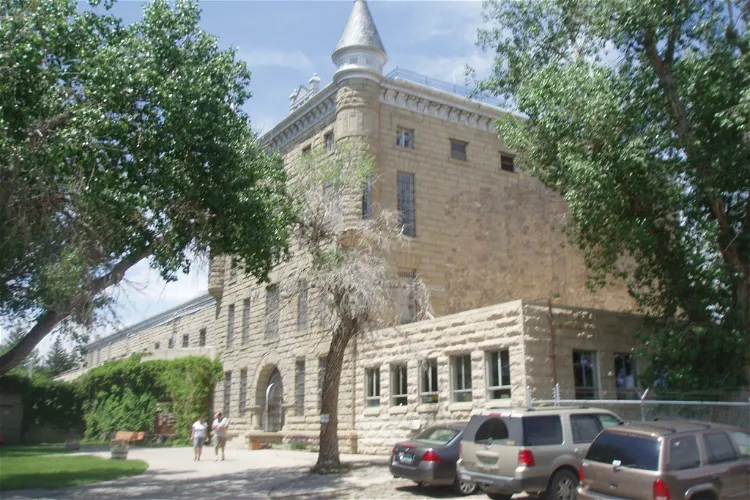

Plan a Visit to Rawlins, Wyoming
Discover rawlins, wyoming: a city with rich history and endless adventures.
Rawlins is a city located in south-central Wyoming with a rich history dating back to the late 19th century. It was established as a stop on the Union Pacific Railroad and quickly became an important transportation center for Northern Colorado and interior Wyoming.
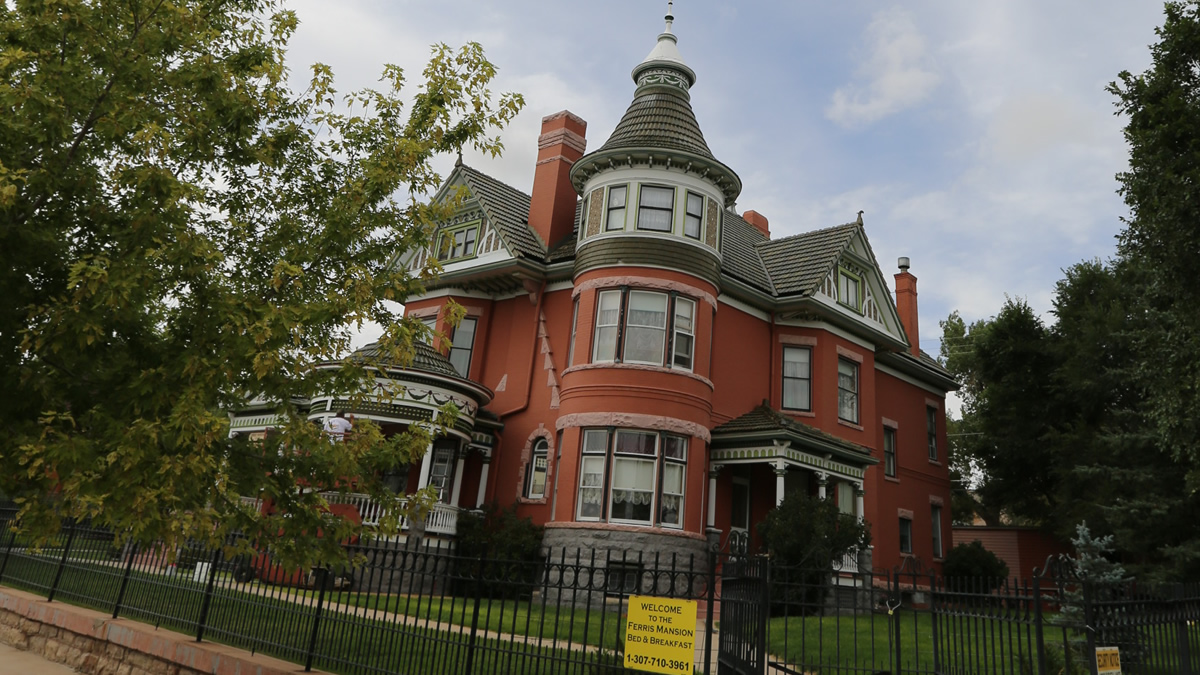
Historical Sites and Downtown Treasures Rawlins Wyoming
Rawlins played a vital role in the development of the state's sheep and cattle industries, and it still remains an important transportation hub with its location at the intersection of two major highways. Visitors can explore the city's historic downtown area and museums to learn more about its fascinating past. Be sure to stop by one of our historic sites such as the notorious Frontier Prison or the Carbon County Museum .
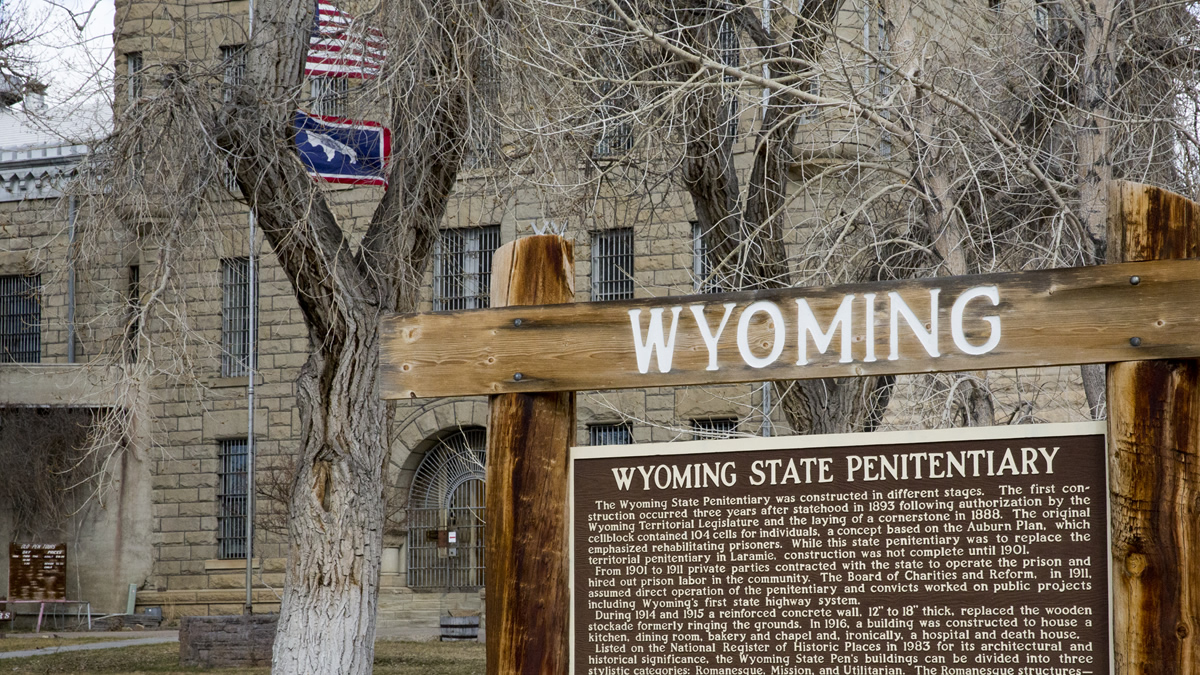
Explore the Downtown Rawlins Wyoming Area
Explore the charming historic streets of Rawlins, where you'll find a mix of locally-owned businesses and larger retailers. Take a trek downtown for shopping, dining, drinks and more. While you are downtown consider taking the downtown mural tour . This downtown educational walking tour celebrates the history of Carbon County through murals created by local artists.
Outdoor Activities and Events
In addition to exploring the city's history, Rawlins offers plenty of outdoor activities such as hiking, fishing, and hunting. If you plan to visit during the summer months, be sure to check out local events like SummerFest and the Carbon County Fair & Rodeo .
Events Calendar
Whether you are a history buff, outdoor enthusiast, or just looking for a friendly community with a strong sense of civic pride, Rawlins, Wyoming has something for everyone.
Things to Do & See in Rawlins
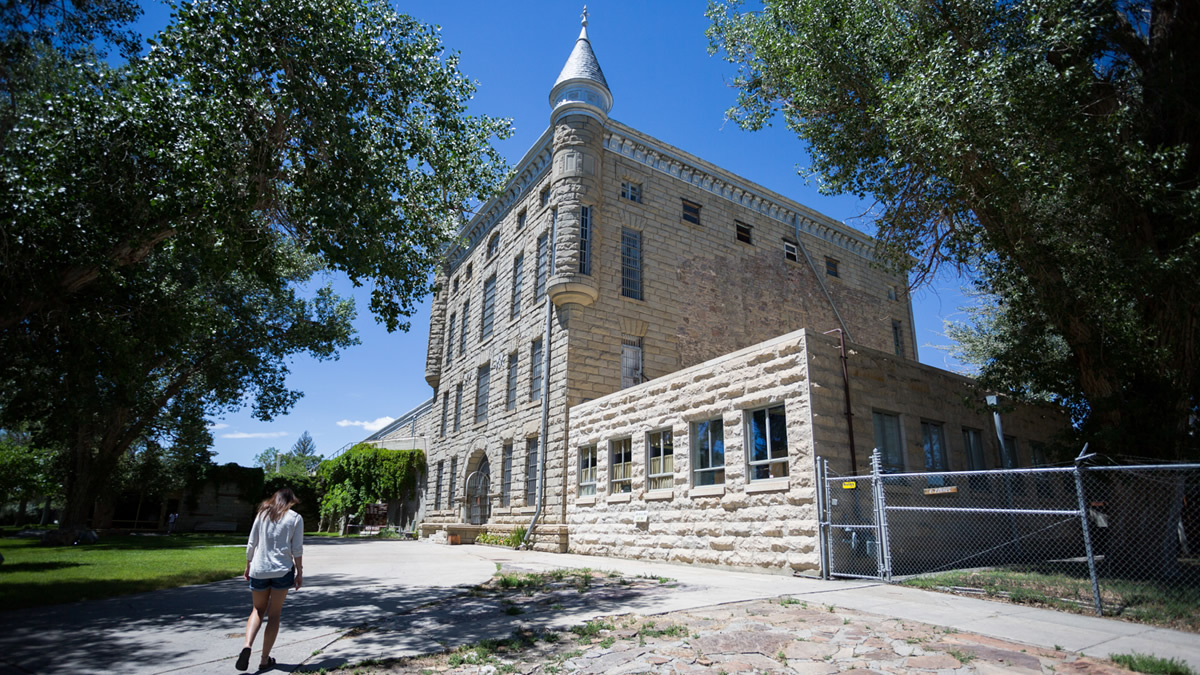
Wyoming Frontier Prison
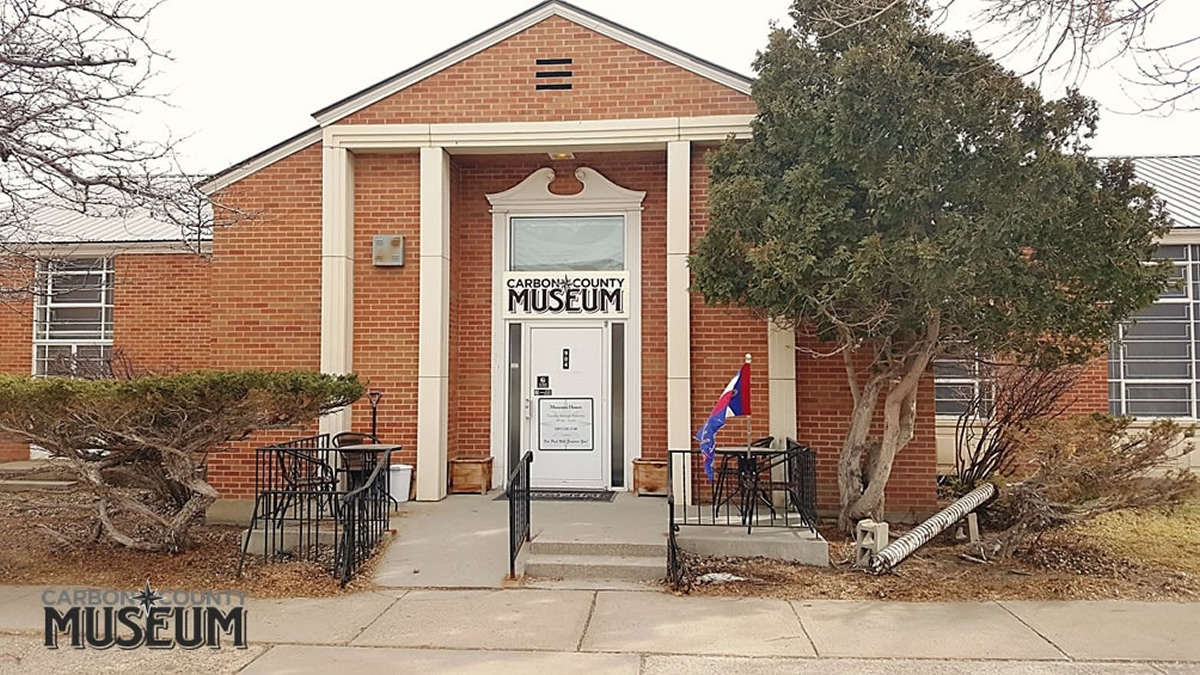
Carbon County Museum
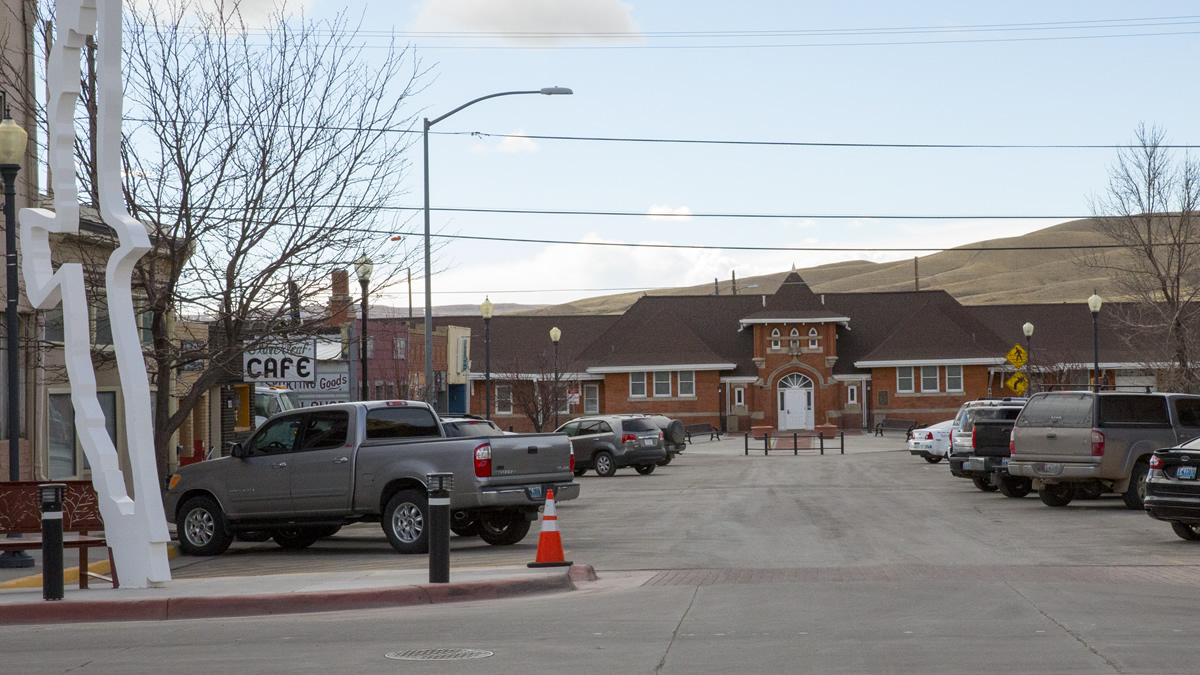
Historic Downtown Rawlins
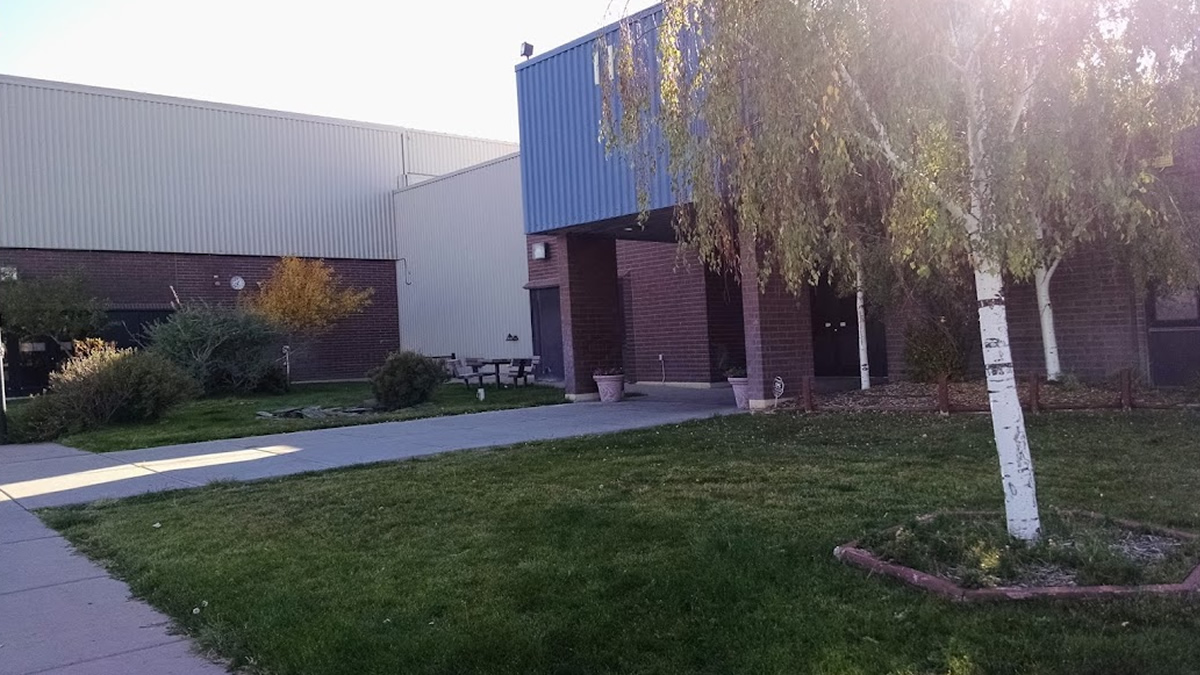
Rawlins Recreation Center
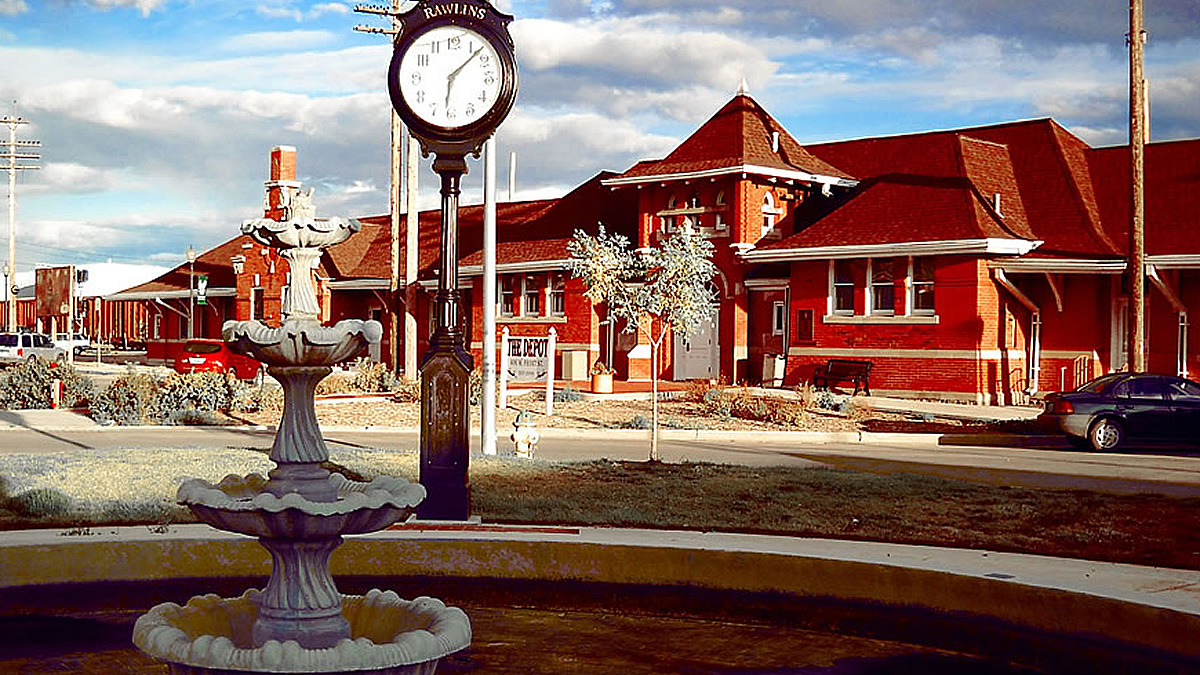
Union Pacific Train Depot
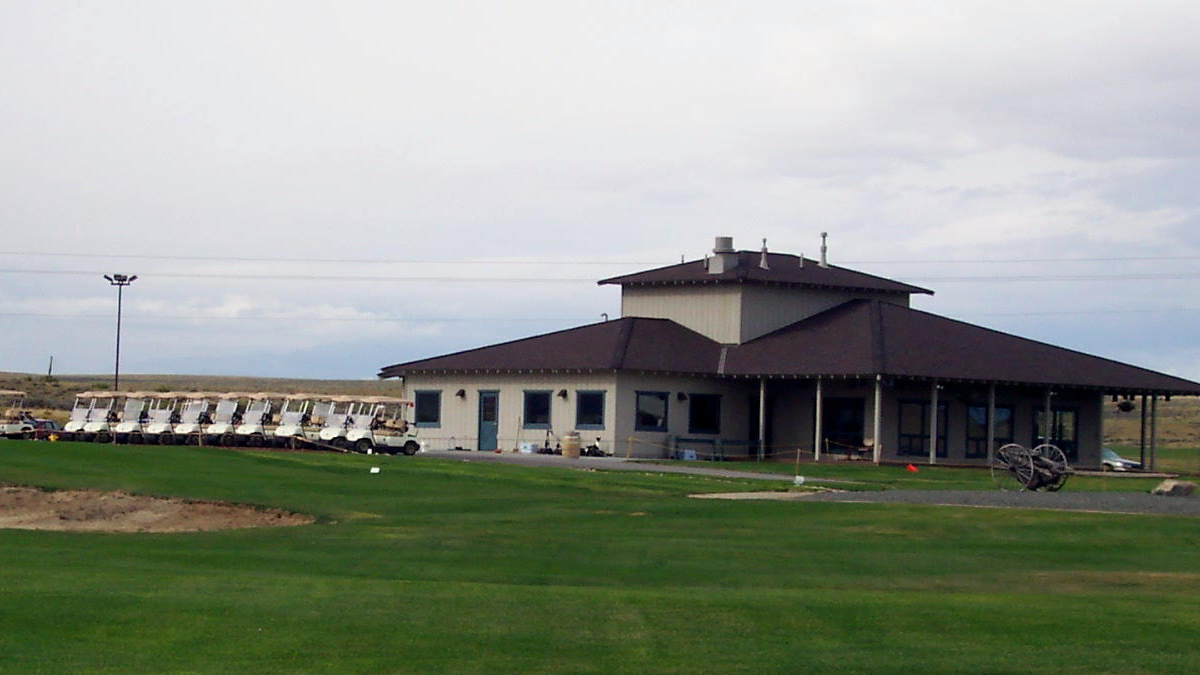
Rochelle Ranch Golf Course
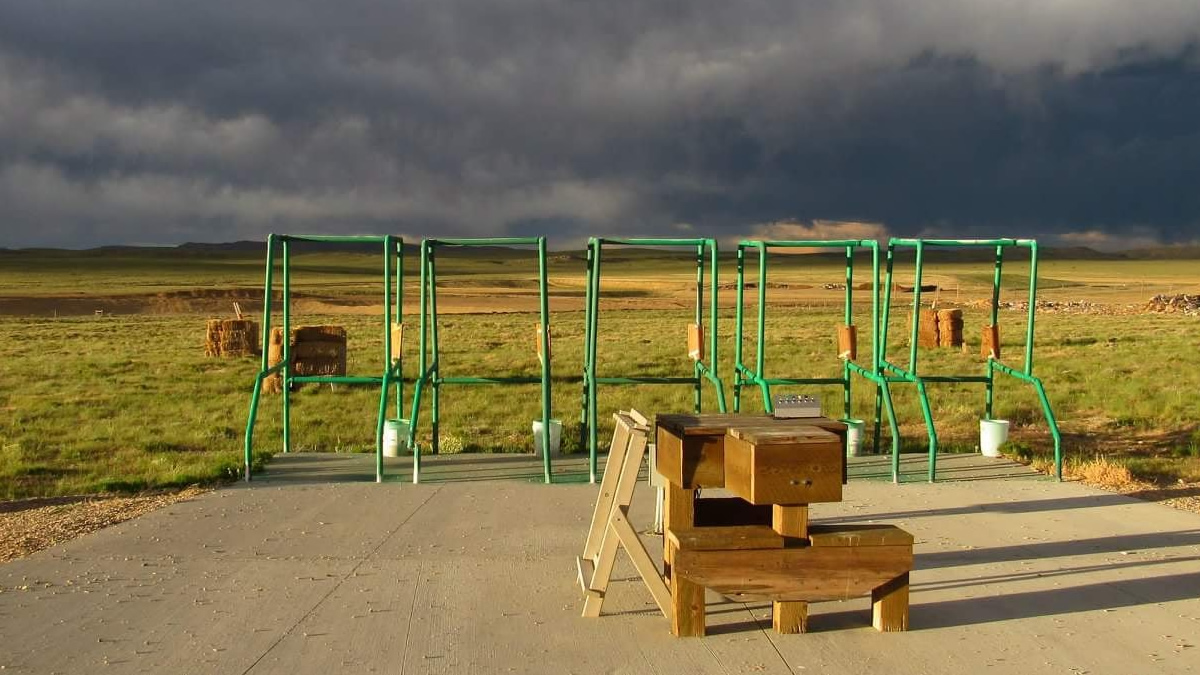
Outdoor Shooting Complex
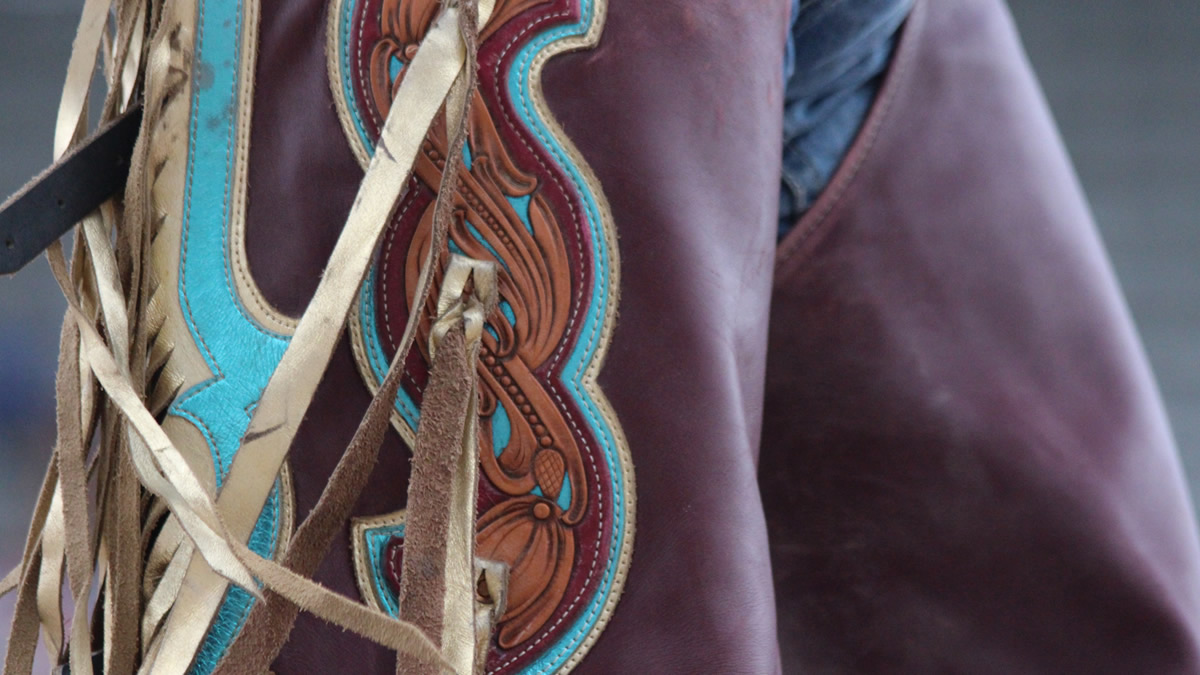
Carbon County Fair and Rodeo
Rawlins dining and shopping.
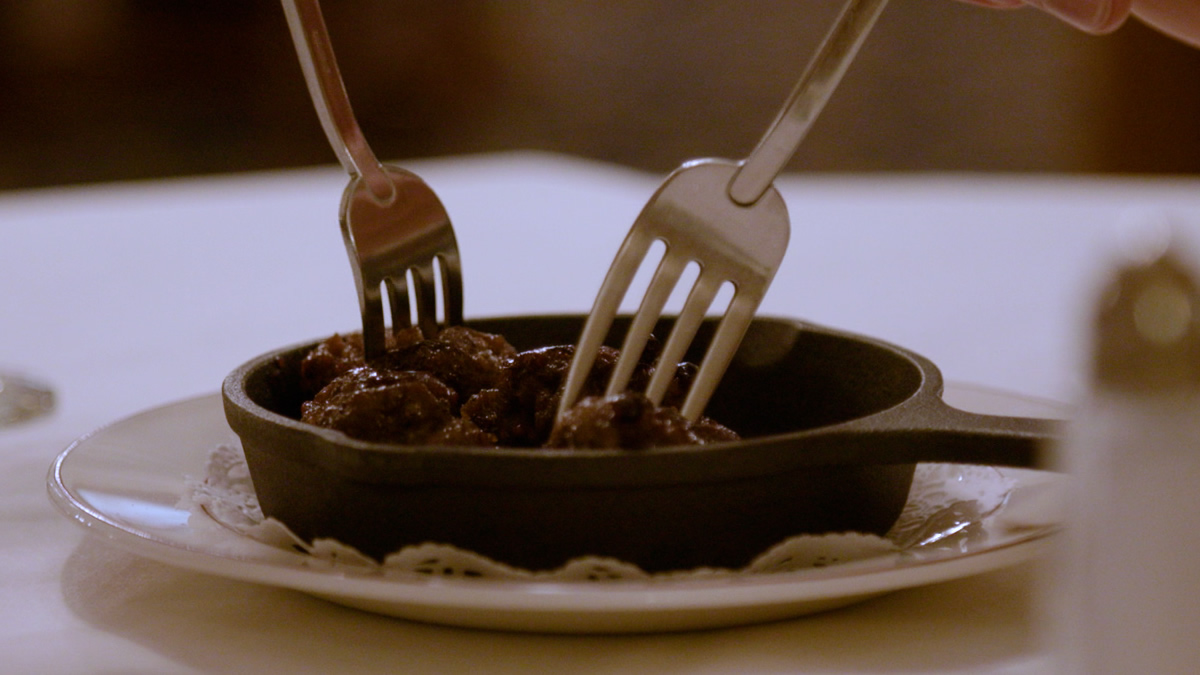
Rawlins provides a variety of dining and shopping options and a welcoming atmosphere.
You can explore a range of cuisine types including American, Asian & Thai, Italian, Mexican, Fine Dining, Specialty and more. Check out our list of available dining options in the link below.
When it comes to shopping, Rawlins offers a mix of chain stores and unique boutiques, featuring everything from clothing and jewelry to gifts and souvenirs. Take a stroll through the historic downtown area for a charming shopping experience. Check out our list of available shopping options in the link below.
View all Drinks & Dining View all Shopping in Rawlins
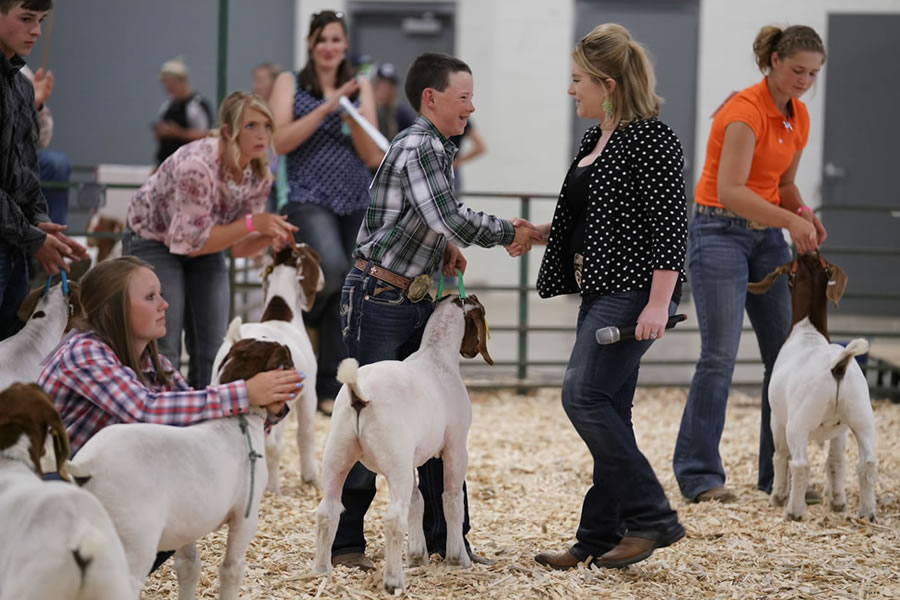
"Old Pen" Tours at the Wyoming Frontier Prison
The eighty year history of Wyoming’s first state penitentiary, now known as the Wyoming Frontier Prison, is as colorful as a western movie! Listed on The National Registry of Historic Places, it offers tours to more than 15,000 visitors per year. If you are visiting Rawlins, Wyoming, you will definitely want to tour this historic landmark. Explore 3 cell blocks and the spooky gas chamber where unfortunate prisoners met their end. Tours are also pet friendly! Contact the Wyoming Frontier Prison for tour options & pricing.
Communities
Information, download the discover carbon county app, the discover carbon county app is designed to help you plan the perfect vacation, trip or weekend getaway in carbon county.
- Discover activities and attractions that match your interests
- View upcoming events near you
- Add events and places to your custom trip
- Share events, places and your itinerary with friends and family

- Privacy Policy
- Travel Safe
- Press & Media
- Master Plan

Wyoming Tourism Web Site Design by: Waves Web Design
© Carbon County Visitors Council • All Rights Reserved.
RoadsideAmerica.com Your Online Guide to Offbeat Tourist Attractions
Attraction:
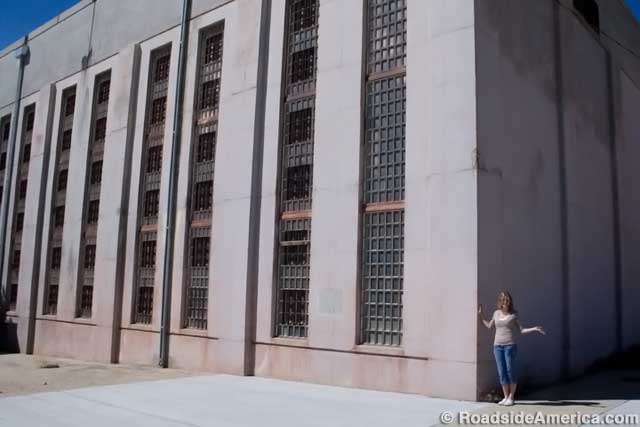
Wyoming Frontier Prison Museum
Rawlins, Wyoming
"This is where there was a lot of screaming," says Kaitlyn, our smiling teenage guide. She's standing with us in the Wyoming Frontier Prison , in a small, concrete-walled room. A cement pole stretches from the floor to the ceiling.
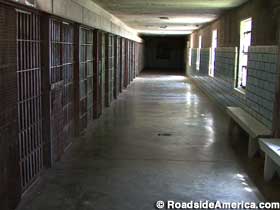
"If the men misbehaved," Kaitlyn continues, "the guards would drag them in here and chain them to this Punishment Pole. Then they'd whip them with rubber hoses and leather straps. And as they screamed, all the men in A Block would hear them, and they'd know what would happen to them if they misbehaved."
Kaitlyn smiles apologetically. "People always tell me I'm too perky when I talk about the Punishment Pole."
Perky is something you wouldn't expect to find in the Wyoming Frontier Prison, which despite its name is a fortress-like 20th century penitentiary. The guides here have pep; we remember a similarly spunky teen from our tour 15 years earlier. The prison itself, however, has only grown more terrifying since then: concrete is crumbling, paint is peeling off ceilings, toilets are covered in crud (but they were that way even when prisoners were here). The contrast between the bleak surroundings and the guileless, youthful guides -- whose parents may not have been born when this prison closed in 1981 -- make this tour unique in the usually ominous universe of abandoned jailhouse attractions.
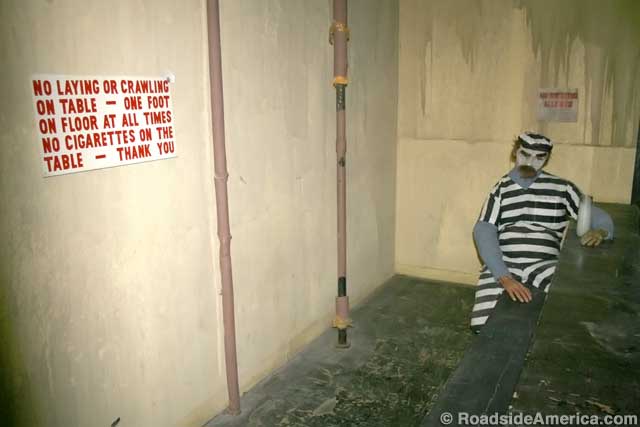
"We try real hard not to depress people," says Tina Hill, the prison's director, when we ask about the guides. "We have a lot of people who say, 'Oh, this place is horrible; oh, I don't want to go in there, it's too sad.'" Tina sighs. "Some people don't like it here no matter what we do."
Obviously, some people shouldn't tour abandoned penitentiaries. And some should, because it's creepy and educational.
Wyoming Frontier Prison provides all of the right sensory cues. Towering cell blocks. Clanging metal doors. Odors that you'd rather not investigate. It's also the only prison we know of that allows visitors to sit in a real gas chamber (in the same steel seat as five executed prisoners).
Kaitlyn, who's been giving tours here since she was 15, dispenses broad assessments backed with gritty detail. "This was a really bad place to be a lot of the time," she says as we walk along an open sewage trench. "They would put razors into the soap. They would break the light bulbs and put shards of glass in other people's food."
Despite the bleak narrative, Kaitlyn insists that the history of the prison doesn't bother her. The most difficult part of her job, she says, was learning to talk and walk backwards at the same time. She's also (perhaps unknowingly) adopted the soothing moves of a flight attendant describing crash preparation -- two arms gesturing in sync at symmetrical cell block features, a smile and a smooth pointing flourish towards the next horror...
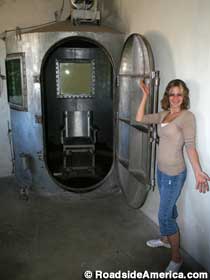
We wind our way past the solitary confinement cells where prisoners were kept naked for up to six weeks ("I can shut you in there if you want," Kaitlyn offers), through the cafeteria with the pastoral prisoner-painted murals on the walls, and out into weedy, sun-baked industrial yard where the license plate and uniform factories once stood. It's a vast place; 13,500 inmates were kept here during the prison's 80 years of operation.
Kaitlyn walks us over to the prison's unique "humane gallows." A condemned prisoner would essentially hang himself by standing on a trap door that fell open when his body weight forced enough water out of counterbalanced bucket. "He could hear the water draining out the entire time," Kaitlyn explains, setting the scene. "It gave him time to think about what he did."
"Sometimes," she adds, "if the guards didn't like you, they'd make you fill your own bucket."
We ascend a long flight of stairs to the Death House, where the condemned convicts awaited their executions. In one corner stands the gas chamber, essentially a big steel tank with thick windows and an air pump. "You wouldn't BELIEVE all the little kids who like to go and sit in there," Kaitlyn says with a grin. We're similarly eager to take our turn. Kaitlyn obligingly closes the door slowly, with a long shriek of metal and a clanging thud of the locking lever. The stainless steel death chair isn't comfortable, but we suspect it was easy to clean with a hose.
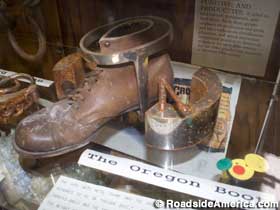
The last stop on the prison tour is a door -- the only surviving relic from the affectionately-named Old Hole. This was a pitch black punishment cell whose tiny outline remains marked onto the concrete floor of C Block. "In solitary confinement you got a blanket, but here you were just naked with a bucket," Kaitlyn says. "If you were good they'd let you empty it four or five times a week. If you were bad you only got two or three."
Kaitlyn explains why the Old Hole was retired. "One prisoner that the guards didn't like, they changed his feeding schedule," she says. "Instead of three times a day, they fed him seven or eight, so he thought the days were going by faster. So when he thought his six weeks were up, he kept waiting and waiting and waiting for the warden to come let him out. But when he never did, he went completely insane."
Wyoming Frontier Prison has a small museum next to its gift shop, which acts as a useful air lock between the tour and the outside world. Highlights include a doll-sized working model of the humane gallows, a mounted display of rope samples from every successful hanging, and the hypno-wheel used by the prison psychiatrist.

More on Wyoming Frontier Prison Museum
Nearby Offbeat Places
More Quirky Attractions in Wyoming
Stories, reports and tips on tourist attractions and odd sights in Wyoming .
Explore Thousands of Unique Roadside Landmarks!
Strange and amusing destinations in the US and Canada are our specialty. Start here . Use RoadsideAmerica.com's Attraction Maps to plan your next road trip.

Create and Save Your Own Crazy Road Trip! ... Try My Sights
Mobile Apps

Wyoming Latest Tips and Stories
- Remains of Japanese American Internment Camp , Willwood, Wyoming
- Ruins: Japanese Internment Camp , Willwood, Wyoming
- Million Dollar Privy , Guernsey, Wyoming
- Saluting the Flag , Rock Springs, Wyoming
- Quebec 01 , Cheyenne, Wyoming
Latest Visitor Tips
Sight of the Week

Noah Purifoy Outdoor Museum , Joshua Tree, California (Aug 26-Sep 1, 2024)
SotW Archive
USA and Canada Tips and Stories
- Bannack Ghost Town: Ghosts and Gallows , Dillon, Montana
- Evel Knievel's Last Jump - His Grave , Butte, Montana
- Big Cow Heads , Yorkville, New York
- Big Cowboy, Upper Half , Albuquerque, New Mexico
More Sightings
Favorite Quirky City Sights
- Cody Attractions


Miscellaneous
- Submit a Tip
- Privacy Policy
- Terms and Conditions
Trip Planning Caution : RoadsideAmerica.com offers maps, directions and attraction details as a convenience, providing all information as is. Attraction status, hours and prices change without notice; call ahead!
Credits, Media/Business Inquiries © Copyright 1996-2024 Doug Kirby, Ken Smith, Mike Wilkins. All rights reserved. No portion of this document may be reproduced, copied or revised without written permission of the authors.
Wyoming State Penitentiary
NEICOLE MOLDEN
DEPUTY WARDEN
GEORGE KIRKIKIS
About the Wyoming State Penitentiary
The Wyoming State Penitentiary (WSP) is a high custody facility for both general population and administrative segregation housing. WSP is one of the larger WDOC facilities and typically the location most in need of correctional officers. WSP offers an intensive Field Training Officer (FTO) program once candidates complete Basic Training Academy to ensure our staff are highly trained. The primary goal for the Education Department at WSP is to provide a basic level of education that will enable inmates to successfully engage with the world around them. Adult male offenders are offered a variety of classroom and video educational and vocational programs. The institution also has a growing correctional industries program.
Directions:
The Wyoming State Penitentiary is located in Rawlins, Wyoming. Take Exit #214 off of Interstate 80 at Higley Boulevard. Go South past T.A.'s Truck Stop and turn left at the security gates, parking in the Administration Building parking lot as posted.
If you travel to Rawlins by bus, taxi services may or may not be available. Before taking the bus, one should consult the phone book or online directory for taxi service.
Youthful Offender Treatment Program (YOTP)
The Youthful Offender Program (YOTP), formally known as the Wyoming Boot Camp, was created by the Wyoming Legislature in 1987 in Wyoming Statute 7-13-1001 and the facility was opened in February 1990. The Youthful Offender Treatment Program, which can house up to 45 multiple custody inmates, is now located within the confines of the Wyoming State Prison at Rawlins, Wyoming.
The Youthful Offender Treatment Program was originally developed as a 90-day program. The program began with ten Boot Camp inmates. In April 1994, the Boot Camp program was expanded to 120 days and in October 2007 the program was expanded once again to the current 180-day program.
This is a highly structured program for first-time, male offenders, who have not attained the age of 30. These offenders must have a court ordered recommendation. The Youthful Offender Treatment Program gives the successful graduates an opportunity for a sentence reduction and serves as an alternative to long-term incarceration.
The basic program is for 180 days and comprises four phases. The routine day begins at 4:00 a.m. and ends at 9:00 p.m. During each day nearly six hours of the inmates’ time is devoted to physical activity. Therapeutic and educational programs are the key component. Work ethic instruction is given through the teamwork concept, as various work details are conducted throughout each day. If needed, or possible, all inmates assigned to Boot Camp earn their GED prior to graduation. Upon completion of the program graduates are released to straight probation, Intensive Supervision Program (ISP), or to an Adult Community Corrections facility.
History of the Wyoming State Penitentiary
Wyoming Territorial Penitentiary
When Wyoming was established as a territory, Wyoming's first major penal institution was the Territorial Penitentiary, located on a portion of the abandoned Fort Sanders Military Reservation now the city of Laramie. The federal government built this facility in the fall of 1873 and received its first prisoner in December of that year. Today, the Wyoming Territorial Prison is operated as a museum and is part of the Wyoming Territorial Park historic site.
Original Wyoming State Penitentiary
Looking toward eventual statehood, the Territorial Legislature in 1888 made provisions for some significant changes in its penal institution. While the Territorial Penitentiary was kept in operation, the legislature established the Penitentiary Building Commission, charged with site selection, procurement or architectural services and other preparations for a major penal institution near Rawlins. The National Territorial Building Act of 1888 authorized such a new territorial facility, at a cost not to exceed $100,000. Statehood came to Wyoming on July 10, 1890. The Wyoming State Constitution, Article 7, Section 18, and related statutes, established the Wyoming State Penitentiary and defined its functions. Article 7, Section 18 states that, "Such charitable, reformatory and penal institutions as the claims of humanity and the public good may require, shall be established and supported by the state in such manner as the legislature may prescribe. They shall be supervised as prescribed by law." In Article 7, Section 23, the Constitution states that "A penitentiary shall be located at or near the City of Rawlins, in the County of Carbon. The legislature may provide by law the location of other public institutions, including correctional facilities." The original Wyoming State Penitentiary was opened in 1901 and operated until 1981. Called the Wyoming Frontier Prison, it is now open for tours and is operated by the Friends of the Old Pen, Inc.
In 1980 the "new" Wyoming State Penitentiary was opened with the first inmates placed in "C" Block. The original housing capacity was 550 inmates. From that date through 1995 additional beds were added so that the total capacity was approximately 825. It was eventually determined that the safe housing capacity was 780 inmates.
In 1983 the West Tower was constructed and put into operation. In 1984 the East Tower was added to the perimeter security of the facility.
In 1995 the Intensive Treatment Unit for long-term substance abuse was opened. During October 1998, the U.S. Department of Justice made the first of several site inspections under CRIPA (Civil Rights of Incarcerated Persons Act). When the DOJ issued their findings letter in Summer 1999, then State Attorney General Gay Woodhouse said that the factual information contained no surprises and that it documented issues that the department was working on before the DOJ visited the penitentiary. She added, however, that "while we disagree that any of the issues singly or together rise to the level of violating constitutional rights, we do agree with many of the recommendations in the letter. We will continue to work in cooperation with the Department of Justice to see that those recommendations are resolved."
When the High-Security Special Needs (HSSN) facility at the Wyoming State Penitentiary opened in Summer 2001, the 1980 facility came to be called the "North Facility," and the HSSN facility became the "South Facility."
At the time that the Wyoming Department of Corrections took possession of the new South Facility in Summer 2001 the department vacated the North Facility due to continuing life/safety issues that could not be immediately resolved. Inmates that would have been housed in the North Facility were moved to other WDOC facilities, to county jails, or to housing out-of-state.
In April 2002 the WDOC announced that the DOJ and the department had entered into a final agreement regarding the Wyoming State Penitentiary. It was noted that the State had one year to obtain substantial compliance with the terms of the agreement and one year to maintain compliance.
2001 South Facility, Administration and Warehouse Buildings, Central Production Facility
When the High Security/Special Needs Facility (South Facility) was planned, a new warehouse and administration building were also planned. Both the warehouse and the administration building were designed to service the entire complex. These two buildings were occupied in March 2000.
The South Facility opened in July 2001 to house inmates that needed high security or had special medical or mental health needs. The South Facility capacity including K-Unit/CPF is 826 inmates. Due to the vacating of the North Facility, the South Facility currently also houses medium and minimum security inmates.
In August 2002 the new Central Production Facility opened (kitchen and laundry facility) and the original kitchen/laundry facility was closed in the North Facility. This brought an end to any occupancy of the North Facility.
Wyoming State Penitentiary
2900 S. Higley Road
Rawlins, WY 82301
Phone: 328.1441
Fax: 307-328-7464
Helpful Links
Community Involvement & Volunteer
Money Transfer for Inmates
Offender Locator
Parole Board
Visitation Information
The Wyoming Department of Corrections does not discriminate on the basis of race, color, national origin, sex, disability, or age in its programs and activities. The following person(s) has been designated to handle inquiries regarding the non-discrimination policies:
For inmates: Facility Grievance Manager
For staff: Facility Human Resources Representative
For public: WDOC Public Information Officer, Stephanie Kiger
For further information on notice of non-discrimination, visit https://ocrcas.ed.gov/contact-ocr for the address and phone number of the office that serves your area, or call 1-800-421-3481.
Your browser is not supported for this experience. We recommend using Chrome, Firefox, Edge, or Safari.
Budget-Friendly Laramie Fun
Guy fieri's favorites in laramie, wyoming territorial prison.
Address: 975 Snowy Range Road Laramie, Wyoming 82070
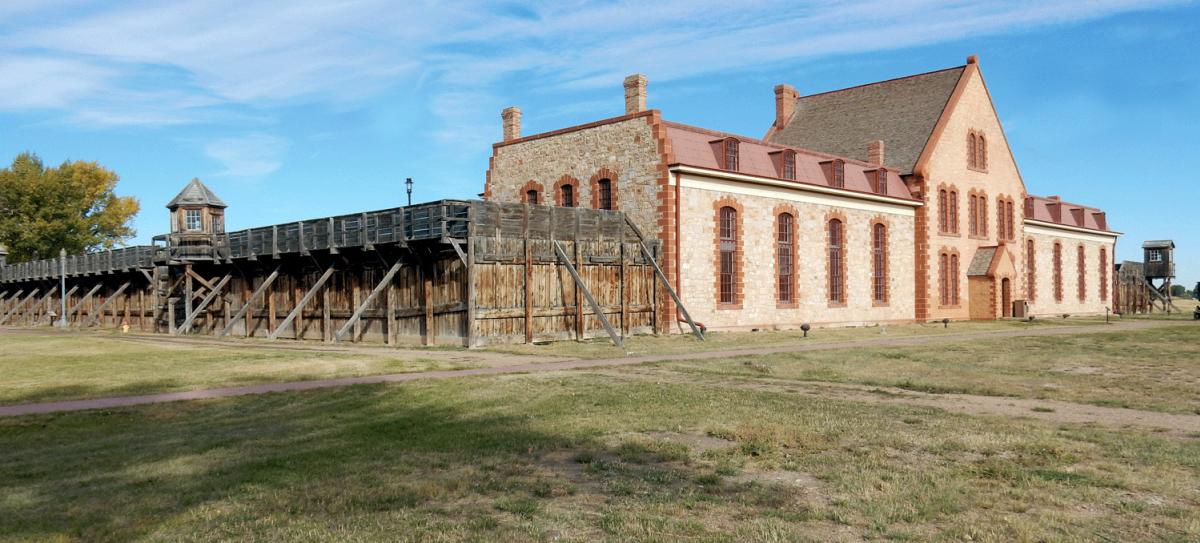
Home to Outlaws, Desperados and Gunslingers.
Meet the bad boys of The Wyoming Territorial Prison
Originally built in 1872, the Prison ran on the Auburn Prison System. This required silence at all times, black and white striped uniforms and numbers replaced names for some of the most infamous criminals.
The Wyoming Territorial Prison is a former federal government prison near Laramie, Wyoming. Built in 1872 it is one of the oldest buildings in Wyoming. It operated as a federal penitentiary from 1872 to 1890, and as a state prison from 1890 to 1901. It was then transferred to the University of Wyoming and was used as an agricultural experiment station until 1989. In 1991 the facility was opened to the public, and in 2004 was designated as Wyoming Territorial Prison State Historic Site.
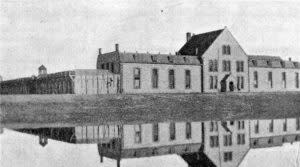
Prison Tours: http://www.wyomingterritorialprison.com/
You May Also Like
Outdoors & recreation, arts & culture, things to do.
- Industry Portal
- Grant Requests
- Privacy Policy
- International 🇫🇷 🇩🇪 🇬🇧 🇮🇹

- Wyoming Ghost Hunts
- Ghost Hunt Gift Cards
- Wyoming’s Haunted Hotels
- Search for:
No products in the cart.
Return to shop

Wyoming Frontier Prison Ghost Hunt, Rawlins, Wyoming
US $ 129.00
Join a ghost hunt with Haunted Rooms America as we delve into the Wyoming Frontier Prison, where harrowing history and spectral whispers await in the darkness. Secure your spot now for a chilling encounter with the unseen, in a night that promises to haunt you long after you leave.
Event time: 8PM – 2AM MT
Limited Tickets!
18 and over only!
- Description
Event Details
Nearby accommodation, wyoming frontier prison ghost hunts.
Venture into the shadowy depths of the Wyoming Frontier Prison, where the echoes of a grim past blend with the chilling presence of spirits unseen.
Dare to tread the haunted halls of the Wyoming Frontier Prison, where the veil between this world and the next is perilously thin. This fortress of despair, soaked in the echoes of anguish and the restless spirits of those who met their grim fate within its walls, beckons the most intrepid ghost hunters to explore its cursed confines.
The gas chamber, a chamber of horrors where countless souls were forcibly ripped from this world, stands as the pinnacle of paranormal activity. Its ominous presence looms large, a testament to the countless lives extinguished within its bounds.
We pose a chilling challenge: Will you brave a solitary vigil in this room of final breaths? Imagine the lights dimmed, the door closed behind you, as you sit alone where the air itself is heavy with the specters of the condemned. This is not for the faint of heart but for those who seek to confront the ultimate testament of the prison’s dark legacy.
Amidst the spectral hotspots, the tale of an inmate’s cruel fate resonates with a bone-chilling intensity. Twice beaten and hung, his spirit is said to be trapped in an eternal loop of suffering—a haunting reminder of the brutality that once ruled this place. His anguished presence is palpable, a specter refusing to be silenced, making his cell a focal point for those who dare to communicate with the beyond.
The prison’s corridors and cells are alive with the whispers of the past—apparitions disappearing around corners, the unexplained sounds of chains and cries echoing through the night. Each step takes you deeper into a realm where the boundaries between life and death blur.
The ghost hunt at the Wyoming Frontier Prison is an experience like no other, promising not just a glimpse into the paranormal but an immersion into the depths of fear itself. As you navigate through the showers, where ghostly sobs and phantom footprints unsettle the bravest souls, and death row, where the air is thick with despair, ask yourself—are you prepared to face the shadows that dwell within?
This event is your invitation to pierce the darkness and confront the spectral inhabitants of one of the most haunted locations in Wyoming. If your heart races at the thought of a night spent amongst the echoes of the condemned, secure your place on this ghost hunt. The Wyoming Frontier Prison awaits your courage. Will you accept the challenge?
TICKETS ARE EXTREMELY LIMITED
LOW DEPOSIT OF $30 PER PERSON
Nestled in the rugged heartland of Wyoming, the Wyoming Frontier Prison stands as a monument to a bygone era of American penal history. Designed by the same visionary architects behind Alcatraz, this castle-like granite fortress began its imposing rise in 1888, with land acquired from the railroad.
Despite financial hurdles that delayed its completion until 1901, the prison soon became infamous as the abode for the most hardened criminals and those convicted of lesser crimes, previously held in Laramie. Almost immediately, it was plagued by overcrowding as it absorbed the influx of wrongdoers, marking the beginning of its storied and turbulent history.
The prison’s early years were defined by a punitive ethos aimed at breaking the spirits of its inmates. With 104 dark, cramped cells lacking electricity, running water, and adequate heating—a situation that persisted until hot water was introduced in 1978—the conditions were harsh and unforgiving.
In 1906, the introduction of a dungeon house for the most violent inmates highlighted the desperate measures taken to enforce discipline within its walls.
Security was a constant challenge, underscored by a series of dramatic escapes and tragic incidents, including the killing of Guard Ed Samuelson by an armed inmate in 1907.
The prison’s population was unruly and dangerous, necessitating the eventual construction of concrete walls and towers in 1915, which curbed mass escape attempts until a notable breach in 1927.
Throughout its operational years, the prison adapted, with new cell blocks and facilities added to accommodate its evolving role in the justice system.
Inmates contributed to national efforts, from manufacturing broomsticks and shirts to producing high-quality woolen blankets for the military during World War II—a contribution that earned the prison the Navy E award.
The shadow of death loomed large over the prison with the completion of the death house in 1912. Initially, executions were carried out using the Julien Gallows, a grim apparatus that often resulted in slow, agonizing deaths through strangulation.
This macabre method was replaced in 1936 by a hydrocyanic acid gas chamber, heralding a new, albeit equally grim, era of capital punishment that lasted until 1965.
After 80 years of operation, the Wyoming Frontier Prison closed its doors in 1981. Today, it has been transformed into a museum, preserved by the Old Pen Joint Powers Board.
Its dark history, marked by tales of suffering, brutality, and the ghosts of its past, continues to fascinate and horrify visitors. Now, it serves not only as a reminder of the penal system’s evolution but as a chilling destination for those drawn to the spectral remnants of its notorious legacy.
What’s Included?
For $129 you will enjoy the following:
- A full night of ghost hunting with the Haunted Rooms America team,
- Group vigils and experiments, guided by our experienced team,
- Use of our traditional and state-of-the-art paranormal equipment,
- Free time to investigate at the end of the night,
- Snacks and refreshments provided at intervals throughout the night.
Event Location: 500 W Walnut St, Rawlins, WY 82301
Event Time: 8:00 PM – 2:00 AM MT
Meet up at the location at the earliest 7:30 PM. There is ample parking available at the venue itself.
What to Bring?
Please bring with you a form of photo ID, and a printed off booking confirmation email (or show this on your phone).
We will be providing you with paranormal equipment to use, however, we will need something of value per group to hold onto as collateral (phone, car keys, watch, etc.)
We will be providing snacks and drinks at intervals throughout the night.
Other than that, just yourself and an open mind!
What Should I Expect on a Ghost Hunt?
Become a paranormal investigator for the night like the TV stars of Most haunted, ghost adventures or TAPS Ghost hunters.
Use some of the specialized equipment and be guided by experienced paranormal investigators who will share their knowledge, techniques and experiences of hunting for ghosts or spirits.
Feel free to bring along any of your own equipment including but not limited to EVP recorders, flashlights, cameras or video cameras.
Bring extra clothing as in some parts old buildings may get cold but please refrain from wearing clothing that can cause distracting sounds. Many old buildings have a story to tell and we will supply them to you along with of course the ghost stories.
There will be breaks and light refreshments are provided.
We are not out to try and convince the world of the existence of an afterlife. That’s for you to decide.
We can be Sceptical and logical yet open to other beliefs and prayers of protection will be carried out.
We do not perform tricks and will not be running around with sheets on our heads!
You will be with like-minded people looking for the answer “is there really an afterlife”?
However much we try unfortunately we can’t guarantee that members of the spirit world will make their presence known but we can at least guarantee that you will experience a fun and interesting night.
Do I receive an actual ticket?
The event is ticketless. Your proof of booking is your booking confirmation email. You will also receive an email with important information prior to your event, usually the week of.
Is there any age limit of who can attend these events?
The age limit is 18 years and over.
Will there be a Medium at the event?
All events listed on Haunted Rooms are hosted by experienced Hosts and Professional Psychic/Clairvoyant Mediums. However sometimes a Medium(s) may not always be present – but as usual, you will be in very safe hands with our experienced Hosts who have a wealth of knowledge and are fully trained in all aspects of professional public ghost hunting events and experience nights.
Can I sleep at an event?
Unless it is otherwise stated, events don’t include sleepover.
Will I see a Ghost?
Unfortunately, the activity will not just happen on command, however using the various experiments and experienced hosts on the events, everything will be done to offer the best chance of spiritual activity.
Recommended accommodation near the prison:
Username or email address *
Password *
Remember me Log in
Lost your password?
Update Hours of Operation - TOP -
Open 7 days/week 9AM-5PM / 8 Tours daily, every hour on the half hour 9:30AM-4:30PM
Meet the Cellmates
Inmate profiles.

Charles Nichols, aka William Morgan, aka Al Biscaro, was, on December 13th, 1920, sentenced to eight to ten years in the Wyoming State Penitentiary for the admitted crime of Grand Larceny, and was delivered to the prison on December 20th.
Before the final conviction, Biscaro had already created for himself a substantial reputation as a violent and unsavory character having already served three prison terms earlier: one in Wyoming, one in Colorado, and one in Montana.
Biscaro had already created for himself a substantial reputation as a violent and unsavory character having already served three prison terms earlier: one in Wyoming, one in Colorado, and one in Montana.
Due to this and his general living habits, he was considered dangerous at all times. However, during his final stay at the Wyoming State Penitentiary in Rawlins, it seemed he had turned over a new leaf. The Warden even regarded him as a “model prisoner”…whatever that may entail. Regardless of the reason for the good behavior, because of it, the prison staff was genuinely surprised by the brash manner in which Biscaro made his escape.
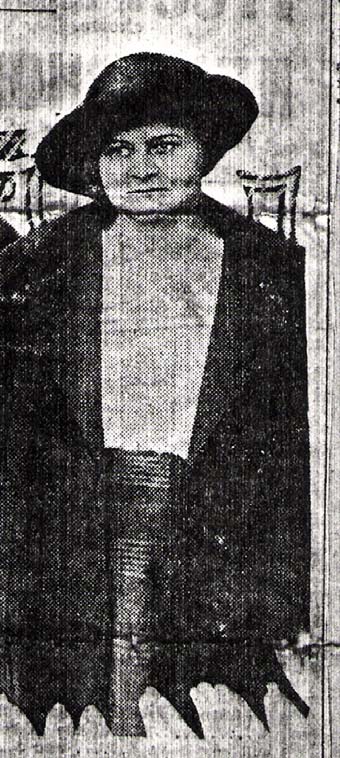
Also on that Monday morning, Dr. Barber, the same doctor that had operated on Biscaro weeks earlier, and a Mr. Rich Magor came into the prison to do some work. Later that day, Mr. Magor went to the infirmary to wait for a ride back to town from the doctor. Biscaro was still being held in the infirmary. Biscaro pulled out a revolver and held the two men, including a guard and seven convicts, at gunpoint against a wall. He sent the guard to tell the Warden his demands: that all the guards be removed from the walls, and that a car containing four women be brought to the infirmary door or else the doctor and Magor would die. Barber and Magor talked the man out of the women and asked him to settle for them instead, which he did. The Warden complied (for the most part) by clearing the walls and by ordering that no guard attempt to shoot the man until he was at least two blocks away from the prison. He then loaded the two onto Dr. Barber’s car, which was near the infirmary door. After a failed attempt at driving himself and nearly killing the two, he had Barber drive at gunpoint, right out of the Sally Port.
Once the posse caught up with him and began searching, three gunshots in quick succession were heard.
Once Biscaro had obtained the agreed-upon distance between the prison and himself, a posse was formed to retrieve him with the Warden driving the lead car. Biscaro, knowing he was being followed, kicked Magor out of his car at forty-five miles per hour, and told him to send the message that unless they stopped following him, he would kill Dr. Barber. Magor escaped essentially uninjured. Dr. Barber, however, “knowing” Biscaro had no intention of letting him go, purposely wrecked the car, and ran away, nearly being shot several times. Biscaro then ran into a nearby ravine to hide. Once the posse caught up with him and began searching, three gunshots in quick succession were heard. Biscaro’s body was found shortly after with one bullet lodged in his heart and another in his head. The third bullet was never accounted for, and the death was presumed suicide.
Biscaro’s wife (Grace Nichols), a stern and rather unattractive woman, later confessed to slipping the gun to her husband without regret adding, “I’d do it again.” When she was told of her husband’s suicide, it is said that her stern face softened a bit and her eyes filled with tears. However, when she was allowed to view Biscaro’s body, her face was emotionless as she said, “Well, Old Scout, guess I will finish your sentence.”
Cited: The Rawlins Republican: May 19th, 1921.

Alfred Hunter

The Wyoming Frontier Prison has housed many inmates for murder, yet not everyone made it to death row or served out their full sentence.
Alfred Hunter became a Wyoming State Penitentiary inmate in January of 1928 for the crime of second degree murder. Because of past childhood accidents such as being kicked in the head by a horse, and being bucked off as well, Alfred had many traumatizing head accidents. Doctors believed because of these accidents, it caused Alfred’s temper and anger issues to become more extreme, but they weren’t completely sure it was totally due to his accidents.
On November 6th, 1927, Alfred lost his temper with Beatrice. He took his automatic pistol and shot her, she died almost instantly.
Growing up, Alfred had a mild life. He lived in Laramie with his mother, who remarried Mr. Alva Howell, after his Canadian father, Mr. Oliver E. Hunter, had died. When he became an adult, he became a “pipefitter,” the best he could do with only a 4th grade education. He was a Catholic, and practiced his religion when he could.
Eventually, the 5’9”, chestnut color hair, grey eyes man found the woman he wanted to marry. Her name was Beatrice Bowen. After marrying, they lived with each other for almost a year, but it soon came to an abrupt end. On November 6th, 1927, Alfred lost his temper with Beatrice. He took his automatic pistol and shot her, she died almost instantly. He then decided to take his own life. He failed when he fired the pistol through the right side of his head, in front of his temple. The bullet exited directly in front of the left temple. Alfred laid unconscious for days in the Ivinson Memorial Hospital in Laramie. After his surgery had been successful, he appeared in court on December 31st. His sentence was a minimum of 25 years and a maximum of 50 in the Wyoming State Penitentiary.
He came to the Wyoming State Penitentiary on January 5th, 1928. His inmate number for identification was #3962. For special identification they recorded his scar from the bullet on his right temple, and a scar on his hair line from the horse that kicked him when he was younger. The now 22 year old man would have a long prison sentence ahead of him.
After only 10 years in the Wyoming State Penitentiary, Alfred was stricken with spinal meningitis, dying at 6 A.M. on February 27th, 1928. He was only 32 years old, leaving behind his mother, step-father, and his 3 children.
Cited: Files from the Wyoming Frontier Prison

Annie Bruce

On March 20, 1907, Miss Anna Florence Bruce of Smoot, Wyoming, was in her family’s kitchen baking five pies. All the pies she baked were fine, except for one. Annie purposefully poured a full bottle of Strychnine, or rat poisoning into the fifth pie.
“While I was in the act of making the pies, a feeling or a wish came over me to kill someone and this feeling, I could not resist.” Later that afternoon Annie and her mother were making a lunch for her father. Annie’s mother asked her to get a pie from the cupboard for his lunch. Annie knew she had grabbed the poisoned one, and put it in his lunch.
As soon as James Hamilton Bruce, age 43, took three bites of the pie, he instantly felt stomach pains. He died shortly after. Some of the poison had gone into James’ liver and stomach and the amount of poison left was sufficient enough to kill five men. She was reportedly immediately saddened by her father’s death and filled with regret.
Annie was the first woman ever convicted of any degree of murder in Wyoming.
Annie Bruce was convicted and sentenced for manslaughter in Evanston, Wyoming on April 15, 1908. Annie was sentenced to four years in the Wyoming State Penitentiary, now known as the Wyoming Frontier Prison. On October 6, 1909, Annie was moved to the Colorado State Penitentiary to continue her sentence because her family wanted her transferred. She was one of the last women to serve time in the Wyoming Frontier Prison.
When Annie was sentenced, her supporters started a petition for her pardon. The petition got more than 630 signers. Annie finally got her pardon on June 6, 1911, Only eight days before her earliest possible discharge date. Annie was born on June 25, 1889. She was Eighteen years old when she was convicted, two months from her Nineteenth birthday and Twenty-One when she was released from prison. After she was released, she moved to Idaho Falls, Idaho on July 5, 1913. There she married Arthur S. Smith and they had two sons and one daughter together. Annie died at the age of 86 on August 13, 1975.
Cited: Petticoat Prisoners of Old Wyoming by Larry K. Brown, Files from the Wyoming Frontier Prison

Annie Groves

October 15, 1907—James E. Passwater sat quietly playing cards at Smizer’s Saloon in Encampment Wyoming. Passwater was the manager of the telephone system in the small mining town, and was well known in the area. As he sat holding his cards, a young woman named Annie Groves approached the saloon wielding a gun.
She fired her weapon, and despite her strong desire to hit her mark, the back of Passwater’s head, the bullet strayed from its’ intended course, grazed the brim of Passwater’s hat, and lodged into the shoulder of another man within the establishment, Louis Peterson. Shortly after the incident, Passwater fled to the Justice of the Peace where he filed a complaint against Annie.
As he sat holding his cards, a young woman named Annie Groves approached the saloon wielding a gun.
Annie Groves and James Passwater had quite the history together, or at least that’s the story that Annie told. At the relatively young age of 19, Groves was working in Encampment as a prostitute, and she and Passwater had done ‘business’ together. Goves then became ill with a venereal disease that she attributed to Passwater. She allegedly attempted to contact him several times, asking for assistance with paying her medical bills; requests which Passwater denied. Groves also accused Passwater of beating her on several different occasions. After the disease progressed and spread to the point of the development of an large raw sore that destroyed her bottom lip, Groves became determined to extract a pound of flesh, so to speak, from the one to blame. However, her motive to do so did not make it justifiable in the eyes of the law.
Constable J.J. Wirth was given the task of locating Annie and serving her with the complaint; she was taken in to custody shortly thereafter, and preliminary hearing was conducted that same evening, not even 24 hours after her attempt to take Passwaters life. Due to Annie’s financial hardships, a court appointed attorney was assigned to hear her story, and after doing so, she took his recommendation and threw herself on the mercy of the court after a guilty confession. The authorities quickly delivered her to the Carbon County Jail to await trial.
Annie stood before the Third Judicial District Court a mere two days later, and upon hearing her case, the sentence was handed down quickly that she was to be taken into custody and imprisoned at the Wyoming State Penitentiary for the term of 1 year of hard labor. She was delivered to the prison that evening, and while being processed she stated she was born in Kansas roughly 19 years prior, had a 9th grade education, and wouldn’t disclose the identity of any family members aside from her husband, E.J. Groves, who was living in Encampment.
Annie’s husband quickly went to work to secure a pardon for his wife and after less than five months of her sentence, the request for pardon was granted by Governor Brooks March 2, 1908. After news of her release became public the couple had already fled the state, presumably returning to a former area of residence in Nebraska.
Sources Cited:Wyoming Frontier Prison files, Petticoat Prisoners – Larry K. Brown

Bill Carlisle

Bill Carlisle was a very interesting character of the old west. He was referred to as a gentleman bandit. Bill Carlisle was born on May 4, 1890 in Pennsylvania, the youngest of five children born to a civil war veteran.
His father was 60 years old when Bill was born, and his mother was 37. His mother died when he was nine months old, and Bill was sent to live in a babies’ home. At the age of three he was taken by relatives and was passed from family to family. He was a poor student and spent three years in third grade. He did learn to read and to spend the money he earned on a paper route. As a small boy he was forced to steal lumps of coal from the railroad to burn for heat at home. As a teenager he started riding freight trains, and at seventeen, he rode the train to Montana where he was hired as a ranch hand.
On May 1, 1916 he was sentenced to life in prison, although he never shot anyone during the robberies and did not take money from women and children or servicemen.
Carlisle eventually worked his way into Wyoming and robbed his first train on February 9, 1916. The Union Pacific passenger train was traveling between Green River and Rock Springs when Carlisle, wearing a white mask and brandishing a gun, woke a sleeping porter and ordered him to take up a collection from the passengers. One gun that he carried was a toy glass gun that was intended to be filled with candy. Carlisle escaped from that train by jumping off of the top of a car; the glass gun bounced out of his pocket and broke. Carlisle rolled away from the track, and hid in bushes while the posse was searching for him. He eluded the posse and held up the Overland Limited on April 4, 1916. He again had the porter pass the hat. On April 21, 1916 near Hanna, Wyoming, he again surprised everyone and robbed the passengers on a train. A posse, led by Sheriff Rubie Rivera of Rawlins, was called in and Carlisle was captured the following morning. On May 1, 1916 he was sentenced to life in prison, although he never shot anyone during the robberies and did not take money from women and children or servicemen.
Carlisle was taken to the state penitentiary in Rawlins, Wyoming where he was a model prisoner. He followed all the rules, attended classes, and did whatever job he was given to do and even did more than his share of work.
While he was in Prison he was working in the shirt factory. He was missing one evening, but he was known for working late if he was loading a truck, so his disappearance did not cause alarm. On November 15, 1919, Bill Carlisle escaped by being carried outside of the walls in a packing crate with the regular shipment of shirts. It was snowing when Carlisle stepped out of the box. By now a posse was searching for him. He boarded a train to Creston and took up his “collection”. When he finished he jumped off the train and was shot in the wrist by a member of the posse. He was followed for two weeks by the posse and at one point he could have shot a sheriff but he did not want to kill anyone. Once he was finally caught by the posse, he had a severe infection from the bullet wound. He was returned to prison on December 18, 1919.
“Would I do it again? No, I have given it a lot of thought over the past twenty years; I’ve had it so much better. It makes a man see what he has missed.”
Bill Carlisle was truly one of the last of the cowboy bandits! He also was a gentleman bandit. He was paroled from prison on good behavior in January 1936 and in 1947 he received a full and complete pardon by the Governor of Wyoming.
He married his nurse who took care of him while he was ill, and after his parole they moved to Laramie, Wyoming and opened a motel which flourished partly because of his reputation. He returned to Pennsylvania in 1962 and died there in 1964 at the age of 74.
In an interview with Carlisle before his death, he said he did not know why he committed those crimes. “Would I do it again? No, I have given it a lot of thought over the past twenty years; I’ve had it so much better. It makes a man see what he has missed.” Bill Carlisle died of cancer at the age of 74.
Cited: “The White Masked Bandit” by Bill Carlisle, Wyoming Frontier Prison files

Charles Aragon

Charles Aragon arrived at the Wyoming Frontier Prison on December 18, 1928. On his prison uniform he wore the numbers 4048.
According to prison records, he was a “half breed Indian” who stood 5 foot 4 and weighed 146 pounds. He was 23 years old. He was convicted in Lander, Wyoming with the sentence of death. He was to be hanged on March 29, 1929.
In the middle of the show, he calmly walked up to his victims and opened fire.
The local Cheyenne paper reported that on the night of September 6th, at a forty-niner show in Riverton, Charles Aragon shot and killed two Indian half breeds in the middle of the circus. Aragon was a performer in the circus and played the role of the typical “bad Indian” of fiction. In the middle of the show, he calmly walked up to his victims and opened fire. The two victims instantly fell dead and two bystanders were seriously injured. Aragon attempted to escape form the scene but he was caught and taken to jail. The cause of the shooting had to do with an affair between Aragon and one of the victim’s ex wife.
Charles Aragon was hanged on the Julian Gallows at the Wyoming Frontier Prison on May 14, 1930 at 12:27 a.m. He was 25 years old.
Sources Cited: Wyoming Frontier Prison files

Earl and Delford Edwards

Delford Edwards #6548
Delford edwards in 1947, at the age of 35 years old, was arrested in natrona county for grand larceny and given a 5 to 7 year sentence. originally a ranch hand from oklahoma, delford got himself in trouble for stealing a car that belonged to his ranch foreman in casper..
On April 12, 1948, Delford was apprehended for his crime and taken to the Wyoming State Penitentiary.
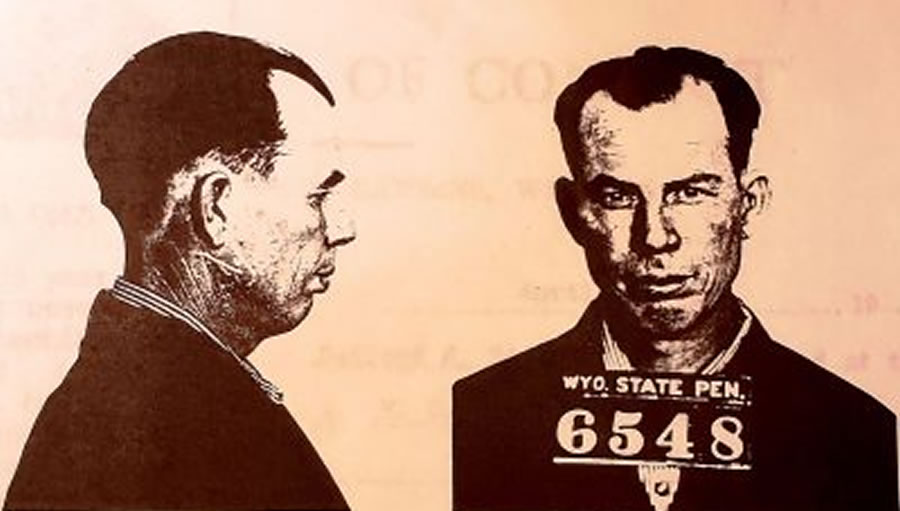
Being divorced from his wife, Delford had no choice but to write home to his mother and family in Oklahoma. Delford Edwards was sentenced to 5 to 7 years in prison. Once Mrs. Allie Edwards had received the older brother’s letter, she made it Delford’s younger brother Earl’s mission to see if there was any way the family could help, but events lead the two brothers to a much worse, and crazy situation.
Earl Edwards #6568
26 year old Earl Edwards, younger brother of the car stealing Delford, was sentenced on May 28, 1948 for sneaking drugs into the State Penitentiary.
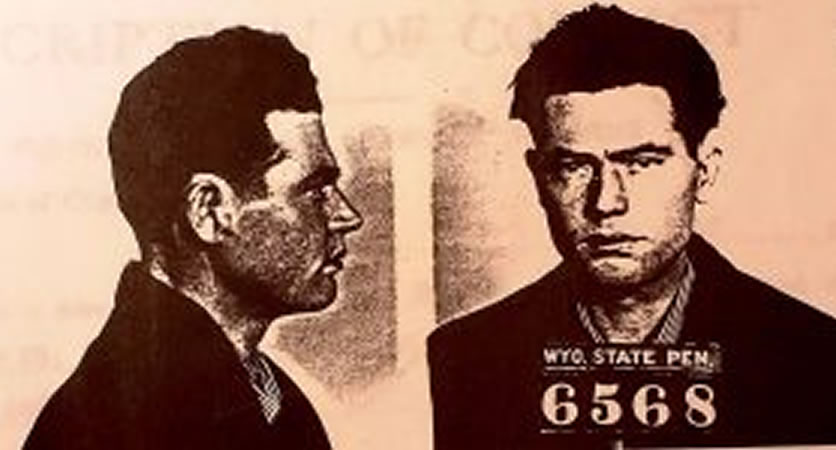
While visiting Delford at the prison, he discovered his troubled brother was sick. So on May 15, 1948, Earl took it upon himself to assist Delford’s illness. He was arrested that day on the charge of attempting to sneak dope into the Wyoming State Prison. Earl had attempted to help his brother Delford by smuggling a “Vick’s Nasal Inhaler” inside a jar of peanut butter.

George Henry Sabin

George Sabin was sentenced to be incarcerated at the Wyoming State Penitentiary November 19, 1909 for second degree murder.
He was named by Herbert Brink as the leader of seven cow men who had slain three sheep men in the Spring Creek Raid. The last armed conflict between cattlemen and sheep growers occurred in the Nowood Valley at Spring Creek, 7 miles southeast of Ten Sleep, Wy. During the “Spring Creek Raid”, seven masked riders raided Joe Allemend’s sheep camp, killing Allemend, his nephew Joe Lazier and Jules Emge and burning two sheep wagons. The raid was supposedly motivated by Allemend’s bringing his herd of 5,000 sheep into the Nowood Valley which cattle interests had declared off limits to sheep. In many regions cattle men established “dead lines” which sheep crossed at the risk of their lives.
“The raiders then opened fire upon the wagon and continued to shoot as long as the sheep men kept up their resistance.”
According to an account by Brink told to a jailer and Stanley Hudson. “The men who were thought best fitted for the job, among who was Sabin the old cow man, and Brink, were detailed to attack the three men while the others went across the creek to get the sheep herder at the second wagon. The raiders then opened fire upon the wagon and continued to shoot as long as the sheep men kept up their resistance. After the firing ceased, Brink secured a five gallon can of kerosene oil from under the wagon, splashed its contents against the end and the sides of the wagon and set fire to the oil.” Joe Allemend was shot while leaving the wagon by Brink.” the other man inside the wagon was dead. The third man who had been asleep in the teepee at the side of the wagon had gotten out of bed and stood up only to fall dead under the hot fire of repeating rifles in the hands of the raiders. Bowlegs asked Sabin where his prisoners were. Sabin said, “I guess they’re all dead”. The raiders then decided that they had done enough for one night and soon after separated and went their respected ways”.
In March 1909, Herbert Brink, Tommy Dixon, Milton Alexander, George Henry Sabin, and Ed Eaton were brought to Trial in Basin for participation in the killings. Two others, Charles Ferris, and Albert Keyes turned state’s evidence and were not charged, Brink was convicted of first degree murder, Alexander and Sabin were convicted of second degree murder. Dixon and Eaton each plead guilty to arson. While serving his time here at the WSP, “Sabin had started a baseball team and Seng was the catcher. They had a first rate team. They had good uniforms and everything necessary to the sport. Seng was hung on the twenty fourth of May. The ball team didnt amount to much after they hanged the catcher. On December 25, 1913, while working on a road gang, Prsioner Sabin was able to escape because the guard with him permitted him to roam about the town of Basin, money in his pockets, and among friends.
Sources: Wyoming Frontier Prison files, Sweet Smell of Sagebrush, Hungry Men May Become Desperate Men, The Fence Post newspaper website, and Bed and Breakfast Inns and Ranches of Wyoming, Ten Sleep website.

Henry Edmonson

On April 15th, 1898 Henry Edmonson was sentenced to life imprisonment for the crime of murder. He apparently did not approve of his daughter’s relationship with one of his ranch hands, so he solved the problem by shooting the ranch hand.
He was 40 years old when entered into his life sentenced and was listed as a heavy drinker and a morphine fiend.
“He was a tough looking character and was even tougher than he looked.”
Edmonson was not a friendly man, and his appearance gave no illusion to kindness. One inmate’s description of him was such: “He was a tough looking character and was even tougher than he looked. He possessed an evil mind and a calloused.” (The Sweet Smell of Sagebrush)
During his stay at the Wyoming Frontier Prison Edmonson did his best to be as difficult as he could. One example of his difficultness could be seen in his refusal to work. According to the Sweet Smell of Sagebrush he was the one man among the one hundred and fifty prisoners there who boasted of never having been made to work. All efforts to make him do so only added to his determination to avoid the workshop.
According to the Sweet Smell of Sagebrush: “At first he absolutely refused to go to work and as a matter of course was put in the dungeon. After being left there for a week or more he was taken out and told to go to the broom shop. He did as he was told insofar to as going to the shop was concerned. For the accommodation of the convicts in the shop, two sticks hung in the front of the guards’ station. When a prisoner wished to leave the shop he saluted the guard, reached up, and took one of the sticks and went out. The first act of Edmonson upon entering the shop was to secure one of the sticks. That was the privilege of which a prisoner could avail himself at any time. There were but two sticks and not more than two men could be absent for the factory at the same time. If both of the sticks happened to be in use, the next man would be allowed to sit upon a bench in front of the guard and wait until someone came back with one. Edmonson didn’t come back with his stick and the guard reported him missing to the officers in the cell house. He had thrown the stick away upon reaching the yard and when they located him he was sitting in his cell smoking. He was immediately taken to the dungeon. After about two weeks he was taken out and told to go to the shop and report for work. He went and repeated the performance with the wooden sticks. This was done over and over with the same results. He wouldn’t work.”
Another example of his stubbornness is in regard to the full beard he acquired during his stay at the Wyoming State Penitentiary. One day the warden decided that Edmonson needed to have his beard shaved off, Edmonson did not agree with this observation. “Old Ed stroked his beard as he stood there meditating, well he said, you are determined to make me shave off my beard are you? The guard said yes. Well said the old fellow, I will have to be put in that chair by force and I don’t doubt there are enough guards to do it. But he added, if you shave me there is one thing certain, you will never shave another man. He was taken back to his cell without a shave. They searched his cell and found a huge club made of hardwood and a ten inch butcher knife with its edge ground to razor keenness. He was the only man there with a full beard.”
He was one of the only people to be pardoned on the account of his bad behavior rather than the good. His pardon came with the condition that he leave the state of Wyoming and never return.
With an attitude like his, it was no wonder that Edmonson managed to collect a few enemies during his stay. Once, after witnessing the lynching of Frank Wigfall, he turned in a list of individuals who had been involved. This list went beyond the truth though and listed several of Edmonson’s enemies too. He must have figured that it was a good way to cause them a little grief.
On December 22nd, 1915 Edmonson was pardoned by Governor John K. Kendrick. He was one of the only people to be pardoned on the account of his bad behavior rather than the good. His pardon came with the condition that he leave the state of Wyoming and never return.
Cited: Sweet Smell of Sagebrush – A Prisoner’s Diary, Files from the Wyoming Frontier Prison

Mark Hopkinson

On January 22nd, 1992 at approximately 12:35 am, under bright florescent lights, the first in a series of three chemicals began to flow through the long clear IV tube into the arm of Mark Hopkinson. (Daily Times, Jan. 30th 1992) Forty two year old Hopkinson was sentenced to death for ordering the torturous murder of Jeff Green.
Green’s body was found on May 20th 1979 at a rest area near Fort Bridger along I-80 with more than 100 cigarette burns and a gun shot wound to the neck. (Huseas, 2006) Green was a witness set to testify against Mark for the 1977 bombing of attorney Vincent Vehar’s home. Mark, who at the time of Green’s murder was in prison in Lompoc California, was later charged and convicted of ordering the bombing of Vincent Vehar’s home in which Vincent, his wife Beverly and their son John all lost their lives.
Beneath that façade, nearly anyone who had dealings with Mark would vow that he had a short temper and vindictive nature; no one dared cross him.
It was said that the conflict between Mark Hopkinson and Vincent Vehar stemmed from a battle between Mark and the Fort Bridger Sewer board, for which Vehar served as the attorney. Mark owned a mobile home park and wanted to hook up the entire mobile home park to local sewer lines for the price of one hook up, to which the Fort Bridger Sewer Board said no. (Huseas, 2006) From this seemingly mild disagreement about sewer lines, stemmed one of the most incredibly complicated and twisted stories Wyoming has ever seen.
By most accounts Mark Hopkinson was a charismatic and good looking man who was athletic and never had a problem with the ladies. Beneath that façade, nearly anyone who had dealings with Mark would vow that he had a short temper and vindictive nature; no one dared cross him. While most kept a distance from Mark, the youth of Bridger Valley were drawn to his charming personality, wild lifestyle and perceived power over others. Unfortunately Mark was able to convince three young men by the names of Jeff Green, Mike Hickey and Jamey Hysell to consistently “handle” his dirty work. Of all the crimes the four men were involved in; it was Mike Hickey who bombed the Vehar’s home at Mark’s insistence. Mike Hickey, a young man with a drinking problem and a vicious criminal history of his own, testified against Mark, and in exchange was not prosecuted for the Vehar murders.
What unsettled even those who were satisfied with Mark’s sentence were that the actual murderer’s of Jeff Green were never apprehended.
During the Grand Jury hearing just days before he was set to testify, the body of Jeff Green was found. Prosecution, believing that Mark had ordered Jeff’s murder to keep him from testifying, convinced the Grand Jury to combine the cases and try Mark for all four murders in one trial. (Daily Times, Jan. 23rd 1992) Special prosecutor, Gerry Spence was appointed (Spence was a longtime friend of the Vehar family) and a change of venue was granted, placing the trial in Jackson WY. The trail of Mark Hopkinson began September 4th 1979. The prosecution presented 27 witness and over 300 pieces of evidence (Huseas, 2006), however when it came time for the defense to present their case, they rested. When asked by the judge if Mark had made the decision not to present a defense Mark replied “It was to the fact simply that I felt the State hasn’t proved anything… (My decision) was voluntary. I thought the whole situation over and it was my own conclusion.” (Huseas, 2006) On September 25th 1979, the jury having only deliberated for seven and a half hours came back with a verdict of guilty on all counts. On September 27th after deliberating for nine and a half hours the jury delivered the sentences. Mark received three life sentences, one for each member of the Vehar family, and the death penalty for the murder of Jeff Green. (Huseas, 2006)
What unsettled even those who were satisfied with Mark’s sentence were that the actual murderer’s of Jeff Green were never apprehended. At the time, Mark was the only man in the in the history of Wyoming to receive the death penalty in a case where the actual murderers were never captured (Casper Star-Tribune March 20th 2004), and the only man in the US since 1976 to receive the death penalty for a crime at which he was not present (New York Times, Jan. 23rd 1992) To this day, there is no record of charges having been filed against the two men who actually abducted, tortured and ultimately killed Jeff Green. (Daily Times, Jan 18th, 1992)
At 12:30 am, 5 minutes before the lethal injection of Mark Hopkinson was carried out, he issued the following statement. (Daily Times, Jan. 23rd 1992)
“I would like this to serve as a dying declaration. Nobody I called from the Lompoc Prison other than Jim Taylor (an acquaintance) had any involvement whatsoever in Jeff Green’s Death.” “Gerry Spence is a lying manipulating piece of shit. “The governor could have proved this case against me was a lie.” “The Attorney General’s office will continue to try and justify their lie.”
Thank you, Mark 1/22/92
“P.S. I feel sorry for the Vehar family, but you got the wrong man.”
“Forgive them for they know not what they do” (Huseas, 2006)
Sources: Legacy of Fear by Marion McMillan Huseas published 2006, Newspaper Articles from; Rawlins Daily Times published; Thursday Jan. 23rd 1992, Thursday Jan. 30th 1992, New York Times published Thursday Jan. 23rd 1992, Casper Star-Tribune published Saturday March 20th 2004

Melville Davis

Melville Davis #1935
If one could tell the sanity of a man by his looks, perhaps Melville Davis would have spent his days in the Wyoming State Mental Hospital in Evanston. But the 1913 headline in The Rawlins Republican partially read “Davis sane” for the savage murder of his sister Mrs. Annie Rider at Fort Steele, Wyoming the fall before. Despite the testimony of doctors, family, and friends affirming various descriptions of Melville ‘being peculiar’ throughout his life, he would be serving time in prison.
I’d rather be lucky than good. Perhaps all the luck had been used up when it came to the Davis family, and certainly by the time Melville appeared. He was born in Hanna, Wyoming to a Welsh immigrant mining family, who pulled up stakes in Wyoming in the mid 1890’s to switch from mining coal to mining gold around the Cripple Creek, Colorado area. Annie was the oldest daughter of that Welsh family; she stayed behind with the family she and Frank Rider had begun.
Frank and Annie settled near Fort Steele with their 6 children when Melville, 15 years younger than his 35 year old sister unexpectedly walked up the road. Melville had been showing escalating bizarre behavior, with it culminating a few days before his Fort Steele appearance in him setting his boarding house room ablaze in Superior, Wyoming. In the very near future, Annie would be dead.
From newspaper accounts, with Frank at work as a bridge tender for the Union Pacific, 20 year old Melville had tried to kiss his 13 year old niece after being warned by Annie to leave her alone. When the girl broke away on his second attempt and told her mother, Annie severely scolded Melville. Melville ran to a bedroom to retrieve a gun, pointed it at Annie and her daughter, and pulled the trigger. The gun misfired! Annie yelled at her daughter to run, shortly followed by Annie and Melville. The girl looked back to see Melville strike Annie with what she thought was a board. It was not; it was an ax and Annie was almost decapitated.
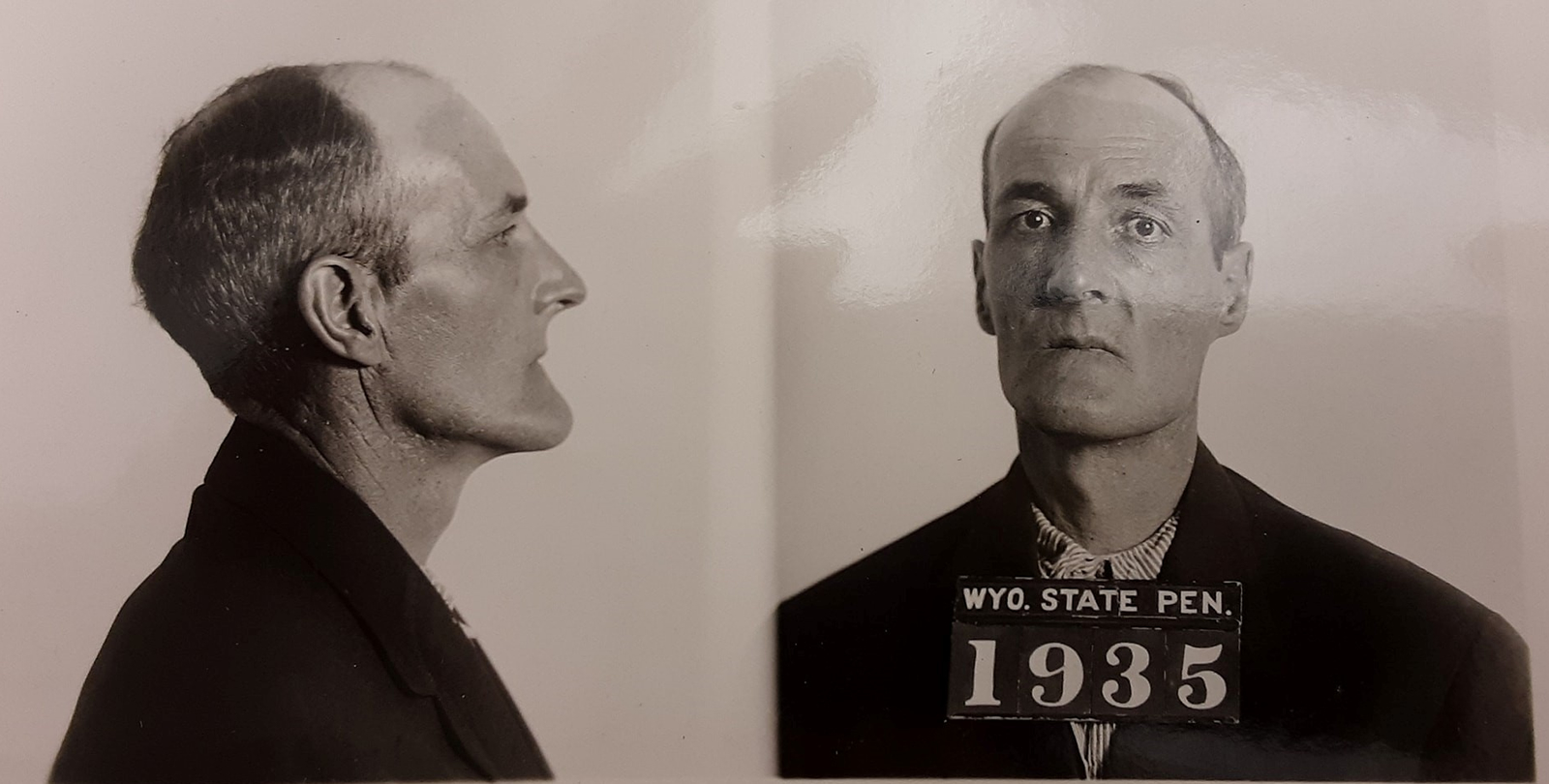
The following day, a letter arrived addressed to Annie from her father warning her of Melville’s recent actions of setting the fire and cautioned her to be alert for trouble. The late arrival is a prime example of bad timing, sad luck, and a sorry testament to the reality of the speed of communication at the time. A manhunt began to find the missing Melville, and he was found near a Fort Steele location where another fleeing fugitive, Frank Wigfall had been discovered just the month before.
Melville was sentenced to life in prison for second degree murder. His mundane existence was dotted with depression and the occasional threat of suicide for the next 25 years. On September 28, 1938, the official report read of his removal. “Melville Davis committed suicide by jumping off the 1 st gallery onto the cement floor, striking his head, which caused his death.” Melville Davis, prisoner number 1935 was no more.
Across from the Old Penitentiary to the east lies the Rawlins Cemetery, the walls and towers ever watching as witness and sentry. Melville is interred in this cold place, joining his brother-in-law Frank Rider who died earlier that year in 1938. And of course, the same cemetery where Annie lies, the subject of many shed tears and whose passing changed lives of her many children and family.
Information from The Rawlins Republican, and Wyoming State Archives
Explore the lives of some of the notorious inmates of the past at the Wyoming Frontier Prison. Dive into their stories and uncover the darker side of history.
Rated the trip advisor #1 best thing to do in rawlins, listed on the national register of historic places., upcoming events, recent news.
- Adaptive Reuse of Historic Guards’ Quarters
Pet Friendly!
Well behaved leashed dogs are welcome!

Come Hang with Us! Contact the Wyoming Frontier Prison

IMAGES
COMMENTS
The Wyoming Frontier Prison is a historic site & museum located in Rawlins, Wyoming. Escape to a place where history comes alive with immersive guided tours.
Group Tours. For large groups (10 or more) a reservation is required. Please call 307-324-4422 to make a reservation. Explore the lives of some of the notorious inmates of the past at the Wyoming Frontier Prison. Dive into their stories and uncover the darker side of history.
Take a tour of the Wyoming Frontier Prison in Rawlins, Wyoming. The Old Wyoming State Penitentiary in use from 1901 - 1981 is now listed on the National Register of Historic Places and offers hour-long guided tours that take visitors through three cell blocks, the cafeteria, the grounds and the Death House.
Embark on an unforgettable journey to the Wyoming Frontier Prison in Rawlins. Join our knowledgeable tour guides as they lead you through this historic landmark. 307-324-4422 . Update Hours of Operation - TOP - Open 7 days/week 9AM-5PM / 8 Tours daily, every hour on the half hour 9:30AM-4:30PM ... Tour the Wyoming Frontier Prison.
80 years of history behind bars awaits you at the Wyoming Frontier Prison Museum as part of this group bus tour. Located at 500 West Walnut in historic Rawlins, Wyoming, the Wyoming Frontier Prison Museum, serving from 1901 to 1981, sent a message to the free-wheeling desperados in the area: Wyoming would no longer be a haven for the lawless.
Wyoming Frontier Prison Museum. Rawlins | Rockies to Tetons. The Old Wyoming State Penitentiary in use from 1901 - 1981 is now listed on the National Register of Historic Places and offers hour-long guided tours that take visitors through three cell blocks, the cafeteria, the grounds and the Death House. While outlaws roamed the windswept ...
Wyoming Frontier Prison. 295 reviews. #1 of 16 things to do in Rawlins. Speciality MuseumsHistoric Sites. Open now. 9:00 AM - 5:00 PM. Write a review. About. The eighty year history of Wyoming's first state penitentiary, now known as the Wyoming Frontier Prison, is as colorful and elaborate as the plot of a classic western movie.
The Wyoming Frontier Prison includes guided tours through the Prison and grounds, an exhibit on the current Wyoming State Penitentiary, and our own prison museum. The Old Pen Gift Shop is also on site along with the City of Rawlins walking path that will take you up to the old prison cemetery. From Memorial Day-Labor Day we are open seven days ...
The Wyoming Frontier Prison includes guided tours through the Prison, an exhibit on the current Wyoming State Penitentiary, and our own prison museum. The Old Pen Gift Shop is also on site along with the City of Rawlins walking path that will take you up to the old prison cemetery. Pets are welcome but must be leashed. For Tour times, please check out our website at www.wyomingfrontierprison ...
One of the most interesting buildings you'll see in Rawlins is the looming, castle-like Wyoming Frontier Prison Museum. The museum offers guided tours of three different cell blocks! The Prison was known as the Wyoming State Penitentiary, and it was occupied by bandits, bank robbers, horse thieves and other criminals for 80 years - from 1901 ...
Wyoming State Penitentiary The Wyoming State Penitentiary aka "The Old Pen" in Rawlins, Wyoming was in use from 1901 - 1981. It is now listed on the National Register of Historic Places and offers must-see guided tours that take visitors through three cell blocks, the cafeteria, the grounds and the Death House.
Discover Wyoming Frontier Prison Museum in Rawlins, Wyoming: This prison-turned-museum is a remnant of the Old West's grizzly, violent past.
Old Pen Tours are a popular Rawlins activity. During its more than 80-year history as a corrections facility, approximately 13,500 inmates called the Wyoming State Penitentiary in Rawlins "home."
The Wyoming Frontier Prison includes guided tours through the Prison, the Wyoming Peace Officers' Museum, a new exhibit on the current Wyoming State Penitentiary, and our own prison museum. The Old Pen Gift Shop is also on site along with the City of Rawlins walking path that will take you up to the old prison cemetery.
Explore a range of experiences at Wyoming Frontier Prison in Rawlins, Wyoming. See upcoming events, event venue rental information and Haunted Halloween tours.
Here are some tours and tickets near Wyoming Frontier Prison Museum, including discount cards & passes, skip the line tickets and tickets to events & activities in Rawlins.
Wyoming Frontier Prison The Old Wyoming State Penitentiary in use from 1901 - 1981 is now listed on the National Register of Historic Places and offers hour-long guided tours that take visitors through three cell blocks.
Wyoming Frontier Prison has a small museum next to its gift shop, which acts as a useful air lock between the tour and the outside world. Highlights include a doll-sized working model of the humane gallows, a mounted display of rope samples from every successful hanging, and the hypno-wheel used by the prison psychiatrist.
The original Wyoming State Penitentiary was opened in 1901 and operated until 1981. Called the Wyoming Frontier Prison, it is now open for tours and is operated by the Friends of the Old Pen, Inc. In 1980 the "new" Wyoming State Penitentiary was opened with the first inmates placed in "C" Block. The original housing capacity was 550 inmates.
The Wyoming Territorial Prison is a former federal government prison near Laramie, Wyoming. Built in 1872 it is one of the oldest buildings in Wyoming. It operated as a federal penitentiary from 1872 to 1890, and as a state prison from 1890 to 1901. It was then transferred to the University of Wyoming and was used as an agricultural experiment ...
The eighty year history of Wyoming's first state penitentiary, now known as the Wyoming Frontier Prison, is as colorful and elaborate as the plot of a classic western movie. The cornerstone of the prison was laid in 1888, but due to funding issues and Wyoming's notorious weather, the doors wouldn't open for thirteen years.
Wyoming Frontier Prison Ghost Hunt, Rawlins, Wyoming. US $ 129.00. Join a ghost hunt with Haunted Rooms America as we delve into the Wyoming Frontier Prison, where harrowing history and spectral whispers await in the darkness. Secure your spot now for a chilling encounter with the unseen, in a night that promises to haunt you long after you leave.
Historic Inmate Profiles Revealed at the Wyoming Frontier Prison in Rawlins, Wyoming. Meet the inmates that once called the Wyoming Frontier Prison home.